After its global reveal mere months ago, the new Honda Civic Type R has landed in New Zealand. The year 2022 marks the 50th anniversary of the Honda Civic and the 25th anniversary of the Honda Civic Type R.
Honda New Zealand saw fit to hold a party, and invited DriveLife to Pukehoke Raceway for a celebratory fang of Honda’s latest Type R creation. This must be one of those ‘pinch me, I’m dreaming’ moments.
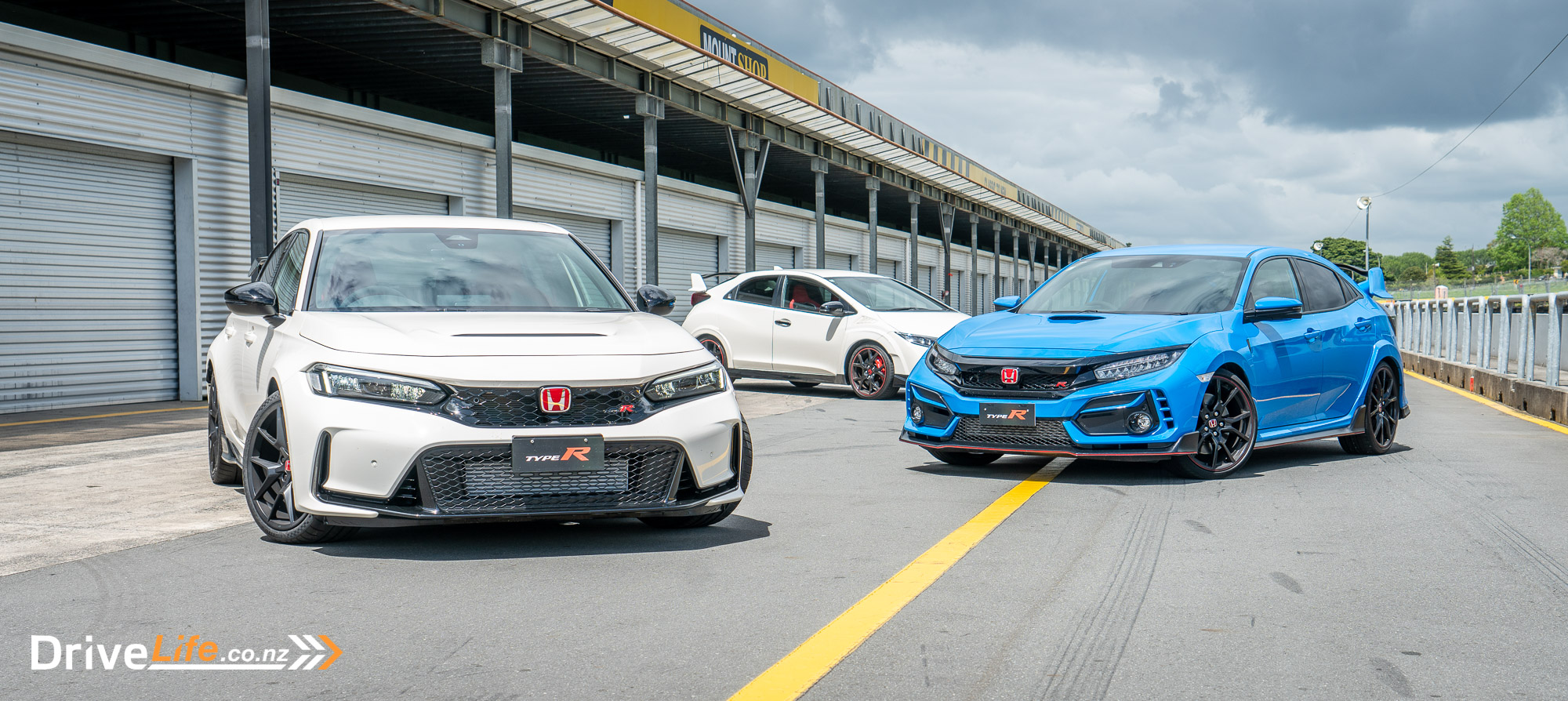
The History of the Type R
Picture yourself in the 1990’s. Grunge is in, so are flannel shirts and flared jeans. Teenagers are talking Grand Turismo, a game for the high-tech device called a PlayStation. In the same era as Pearl Jam and Pikachu, the Japanese had begun taking the auto-industry by storm.
Fresh off their late 1980’s success in Formula 1, the 1990’s to early 2000’s was a golden era for Honda’s road cars.
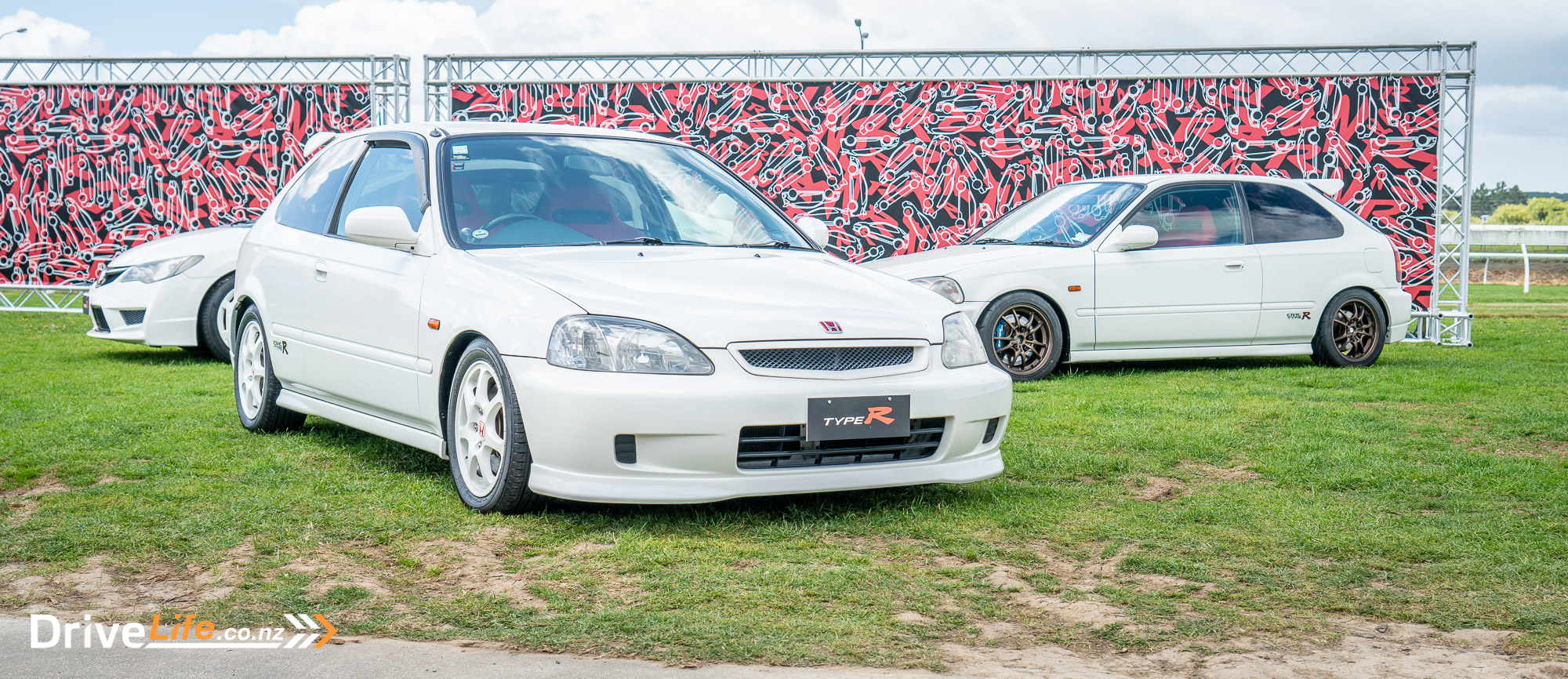
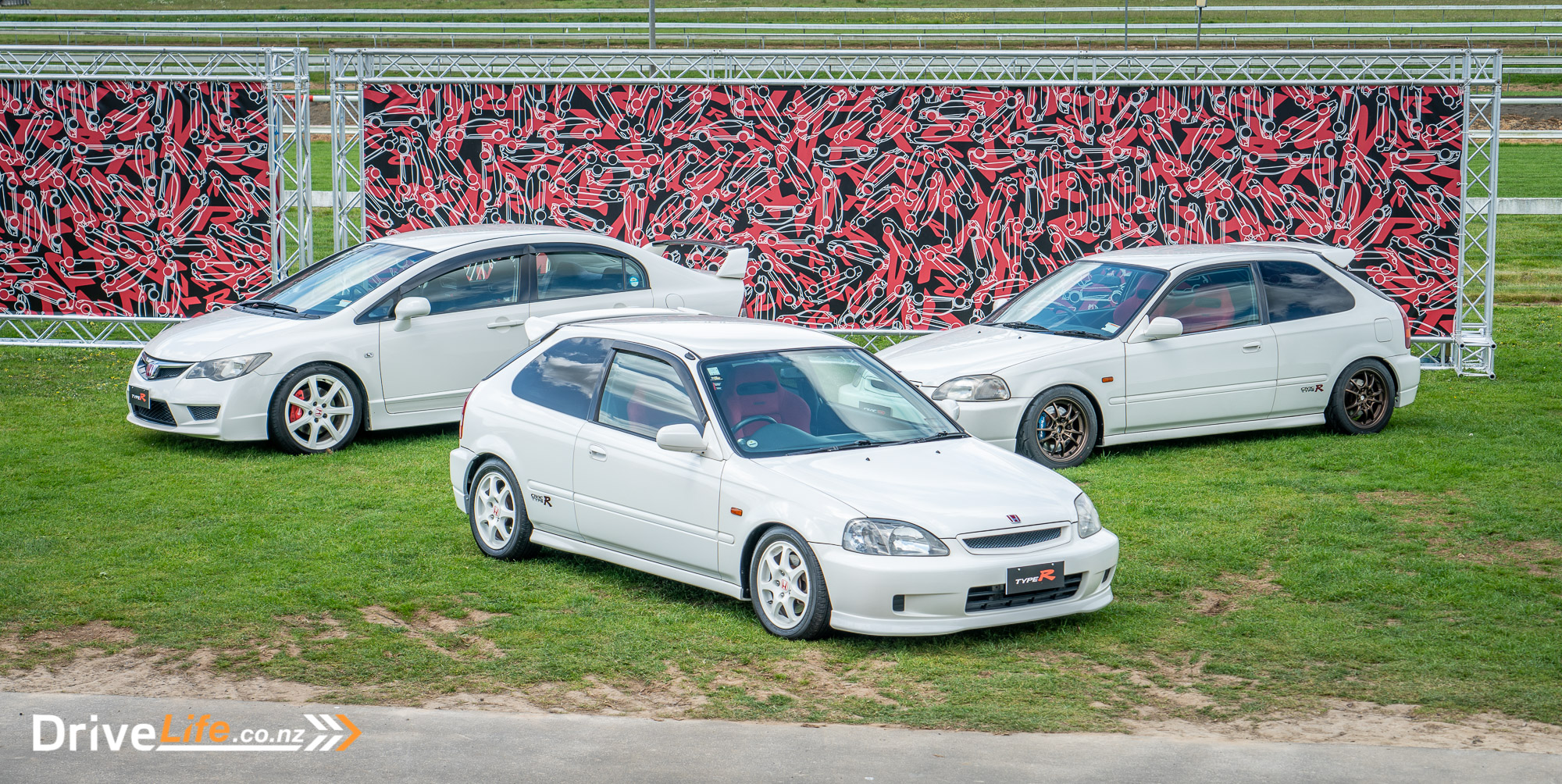
It began with the NSX in 1990. Soon after, the Type R badge emerged for the NSX in 1992. Identified by their iconic Championship White paintwork, the Type R badge came to represent Honda’s focus on minimising weight and maximizing performance potential.
Soon after the NSX, the Type R badge began populating Honda’s range. It appeared on the new Integra in 1995, and later on the Civic in August 1997 with the launch of EK9 Honda Civic Type R. An Accord Type R appeared a year later in the UK. Then, Honda capped-off the decade with a gift to itself, with the superb Honda S2000.
This era was unquestionably one of Honda’s best, which cemented them into the history books with some of the best four-cylinder engines, ever. The 1990s was Honda’s Led Zeppelin IV moment.
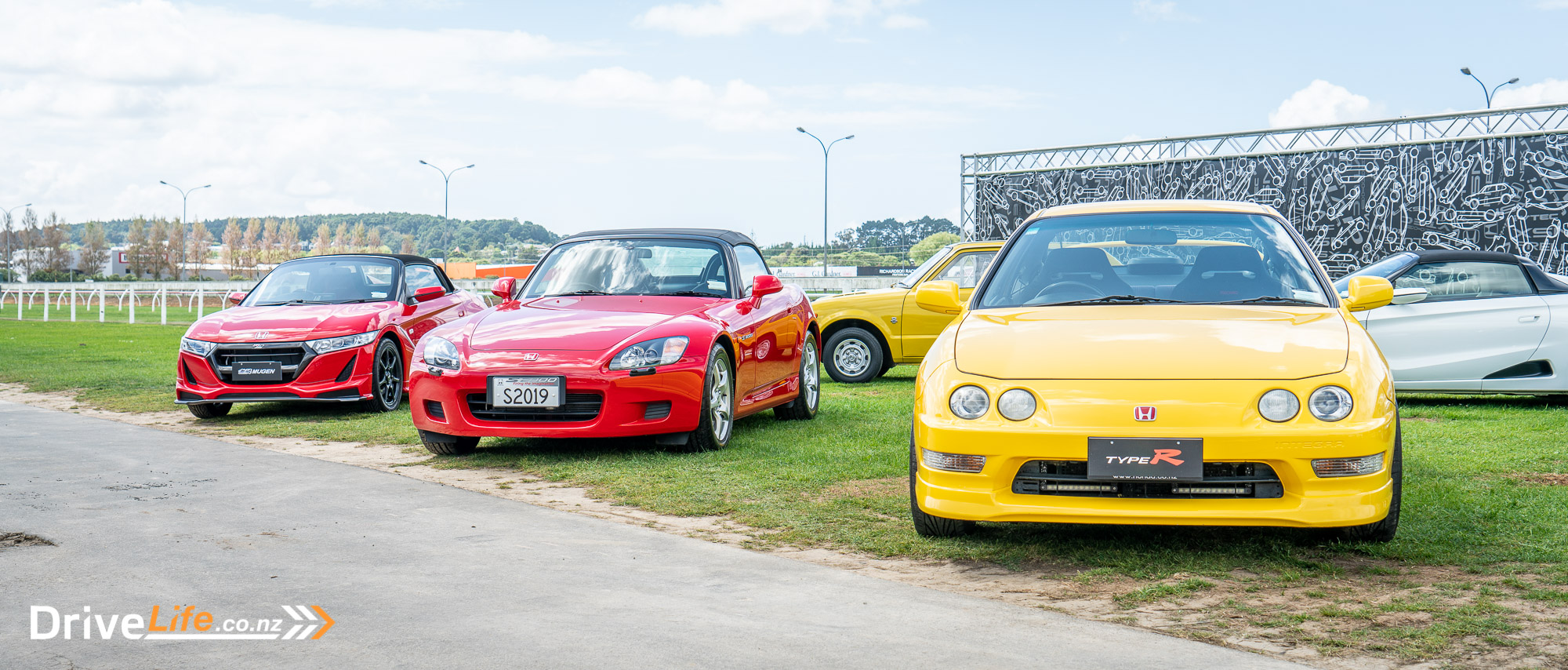
However, this was over 20 years ago. Since then, Honda’s focus has shifted towards the mainstream market, with their range becoming a bit more pedestrian as a result. The Civic Type R is the only Type R to survive. If it weren’t for the Civic Type R, the badge may have been relegated to the history books.
Following the original EK9 and its spirited successor, the EP3, the Civic Type R survived through the 2000’s in a mildly weakened form as the FN2. In 2015, Honda got serious again, introducing the first turbocharged Type R, the FK2. However, this model never reached New Zealand. The true renaissance for the Type R came in 2017, with the introduction of the FK8. Wild styling, and even wilder performance. Honda smashed a Nürburgring record with it. I even said it was one of the best modern cars I’d driven when testing it. Today, Honda reckons they’ve done it again with the new Honda Civic Type R, the FL5. It’s the most powerful Type R to date. Honda’s so confident, they gave us an empty Pukehoke raceway to test it out. I suppose I’ll take one for the team, eh?
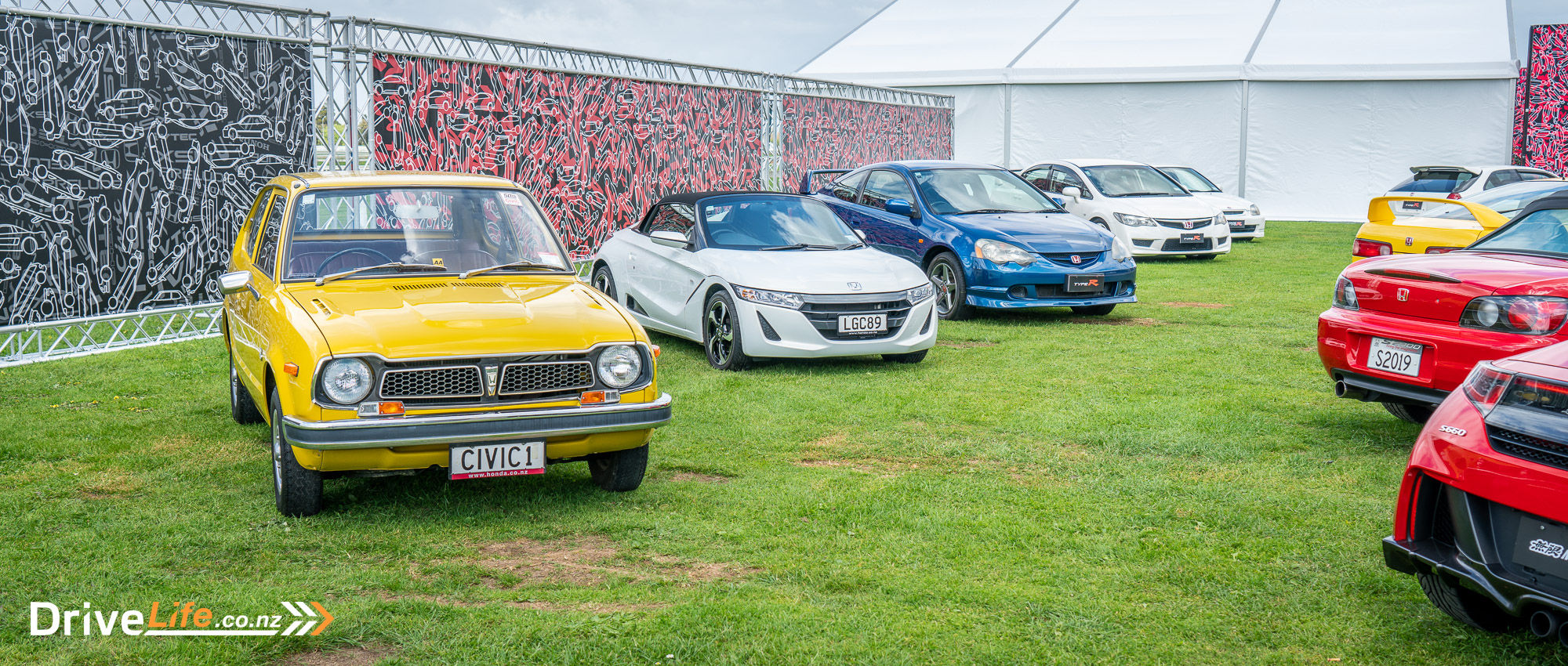
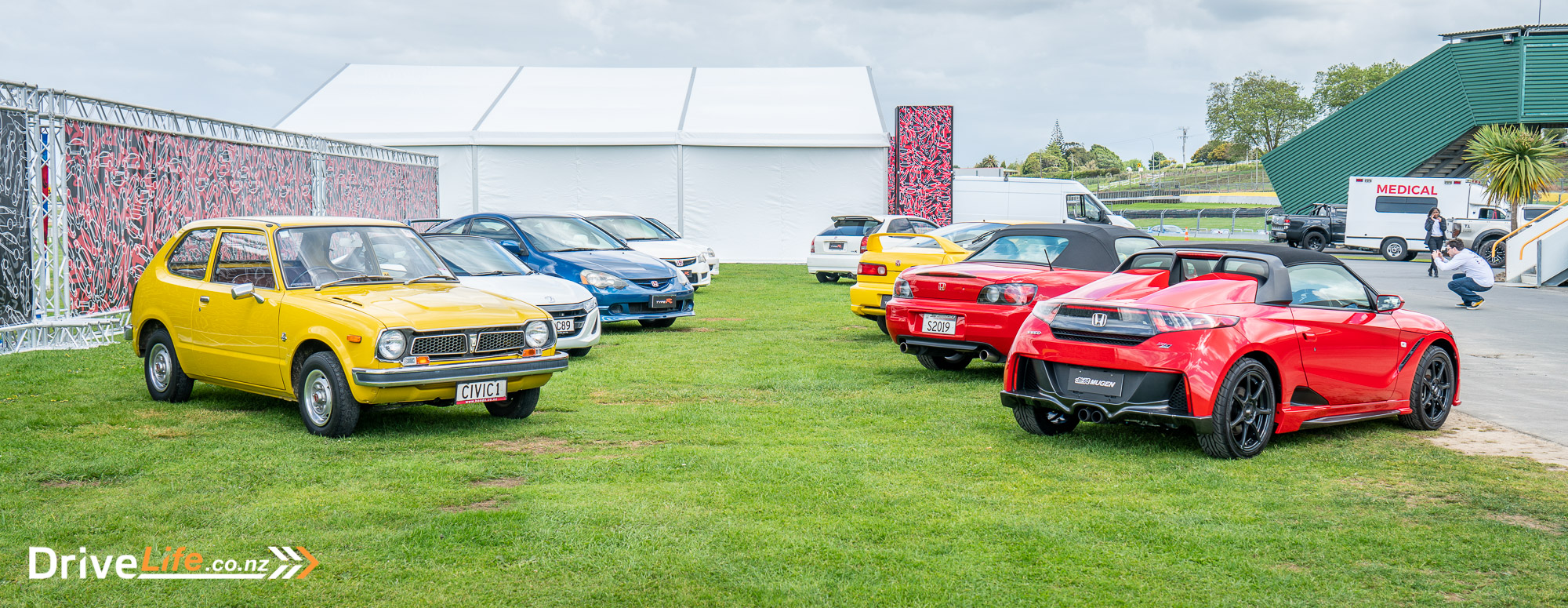
2022 Honda Civic Type R: The Design
The looks of the recently departed Honda Civic Type R were somewhat polarising. Personally, I loved its mentalist styling, but I can also appreciate those owners who may have felt self-conscious turning up to a formal occasion in their Civic Type R.
This latest car is significantly more subdued. The anime cartoon angles of the old car are gone, replaced with the smoothed-out, Euro-sleek body style of the latest iteration of Honda Civic. But, that’s not to say that the Honda Civic Type R has adopted the sensibilities of say, a Volkswagen Golf R.
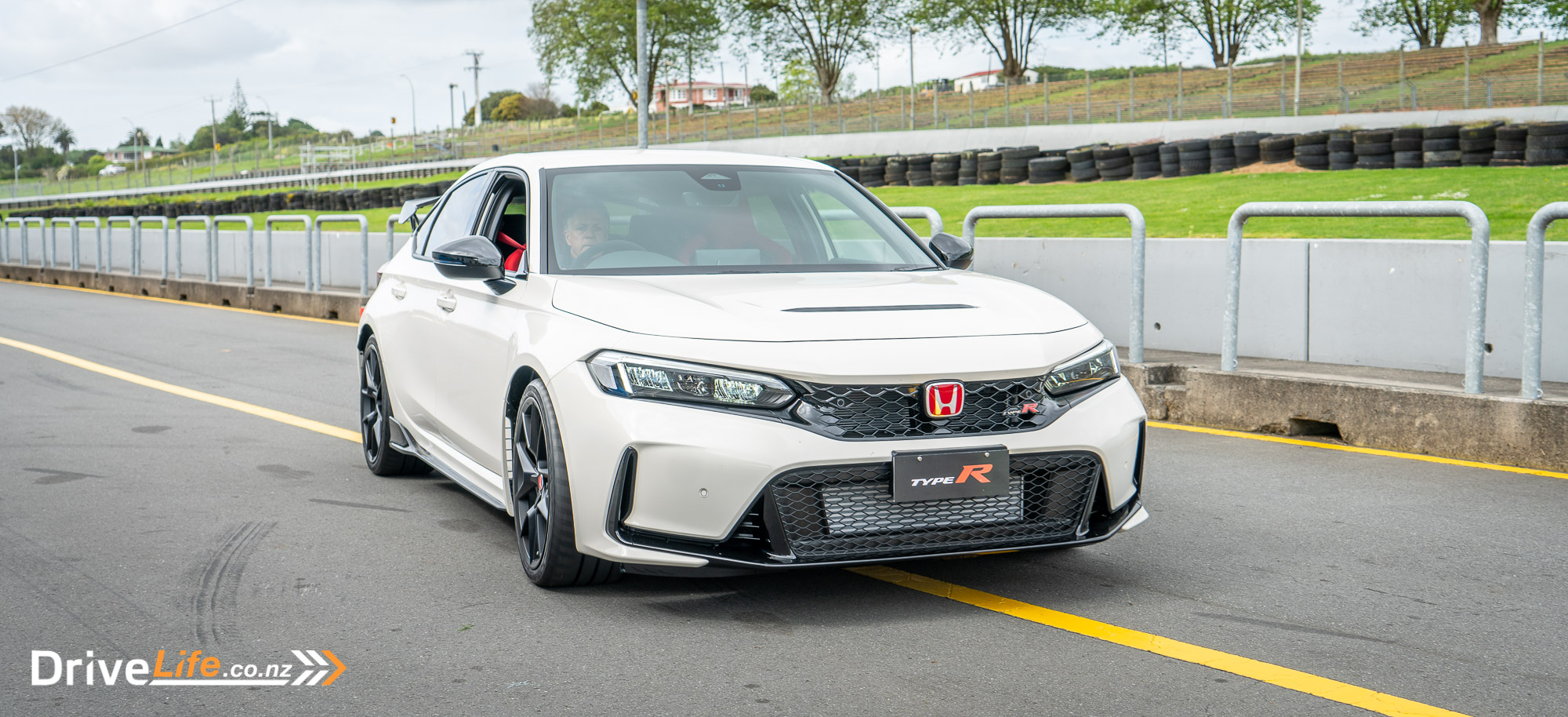
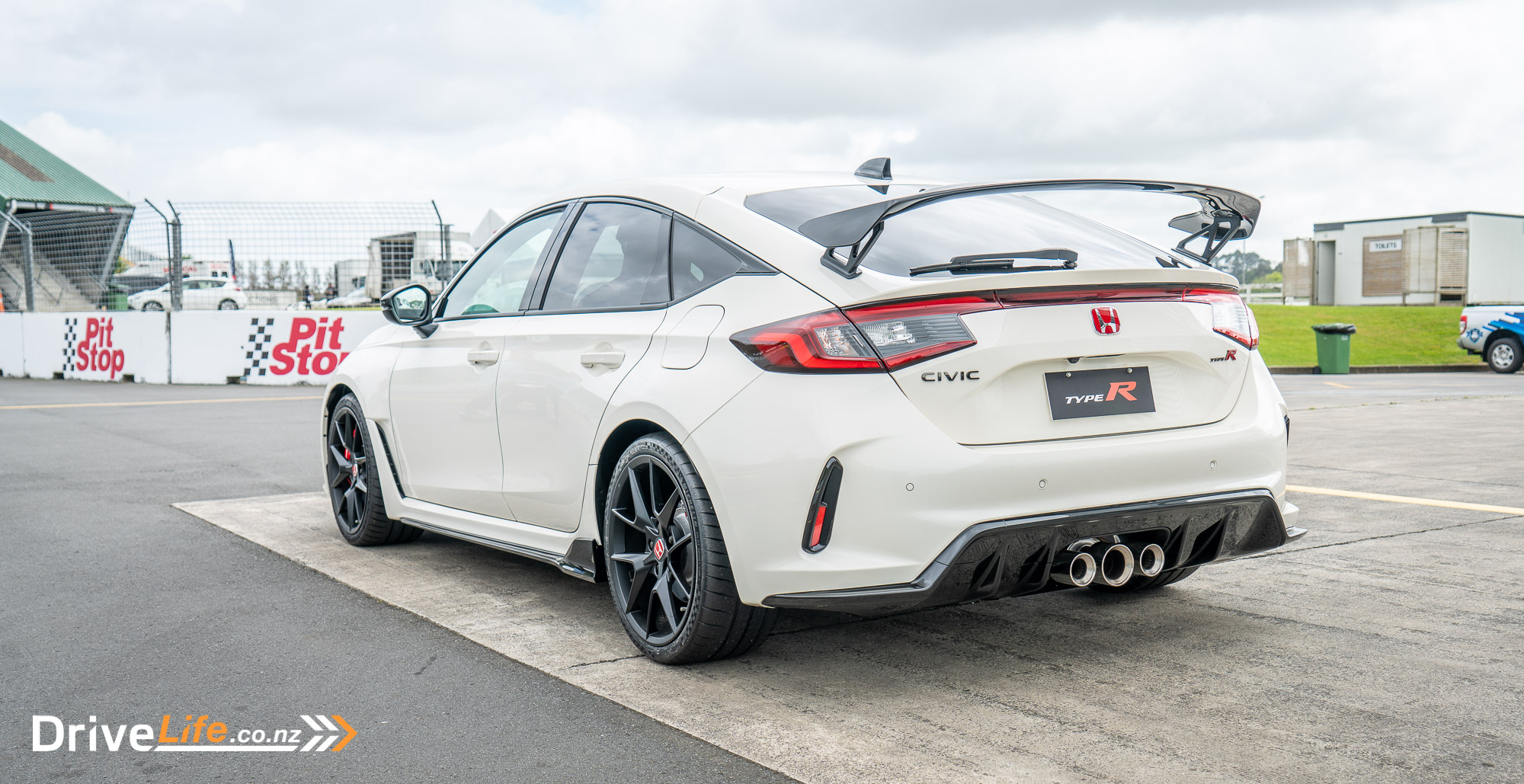
In fact, the Type R only shares its front doors with the standard Civic, with the rest of it unique to the model. The body sits longer, lower and wider. Black 19’’ alloy wheels fill out the flared arches, with red Brembo brakes shining out from underneath. At the front, aggressive bumpers with wide, blacked-out grilles, along with a series of functional air vents, sets a serious tone for what lies beneath. Along the sides, the Type R adds black side skirts, with subtle diffusers on the end. Though the real gems lay at the back, the Civic Type R gaining a new rear wing, a new diffuser, and a freshly-redesigned – Ferrari F40 inspired – tri-pipe exhaust.
Altogether, the exterior design has matured, yet it still looks menacing. Sort of like a UFC fighter in a suit.
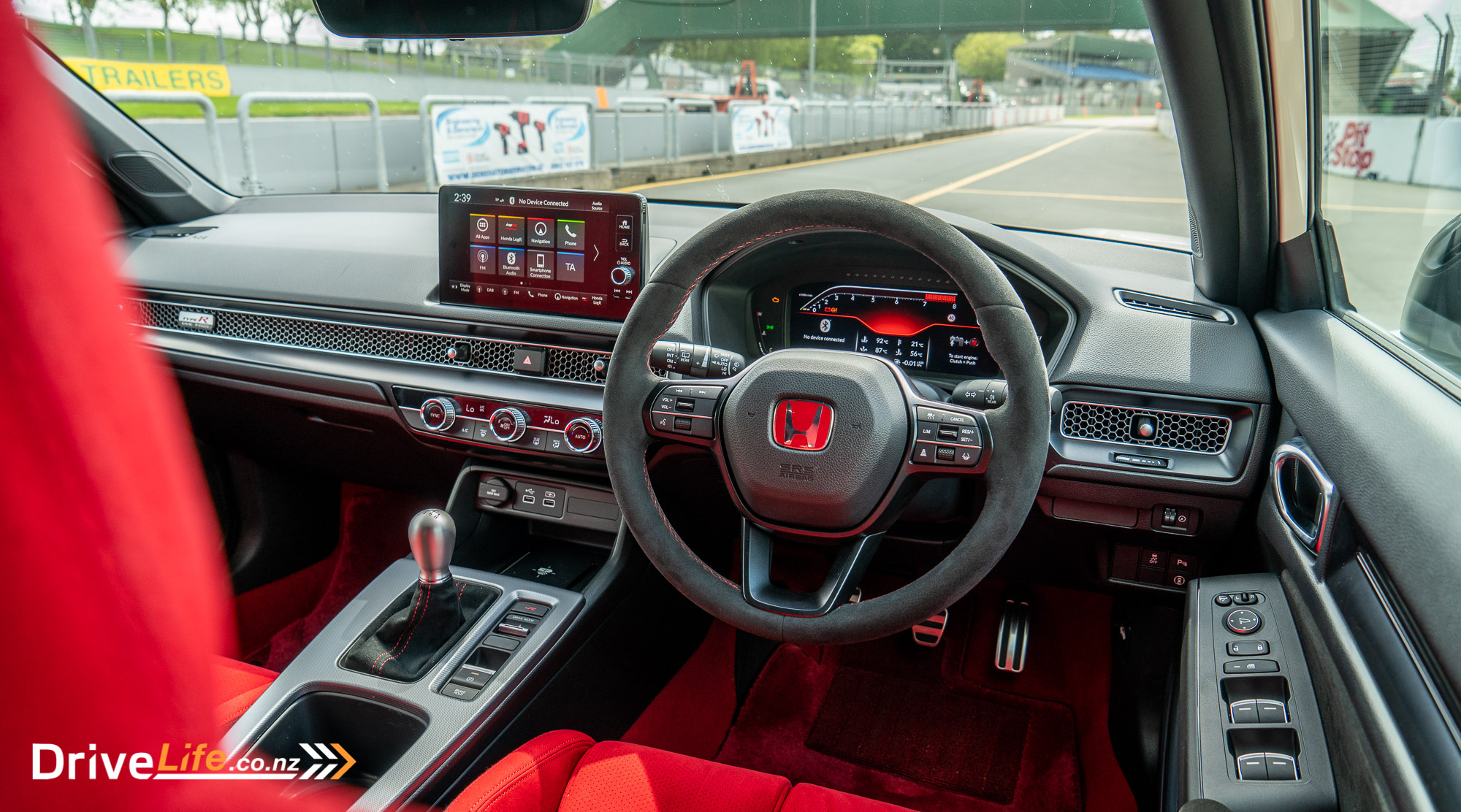
Inside, the Civic’s cabin has been given the authentic Type R treatment.
Red is right, according to Honda. The seats are red, the stitching is red, and the seat belts, you guessed it, are red. Even the carpets are red! Never mind that you’ll probably see red from needing to clean them all the time, regardless of how cool it is.
Of course, it’s not just smatterings of red to differentiate a Civic Type R. Honda has always given special attention to the inside of any Type R model. Not by focusing on how many tricks the infotainment can pull, but instead, by focusing on the driver.
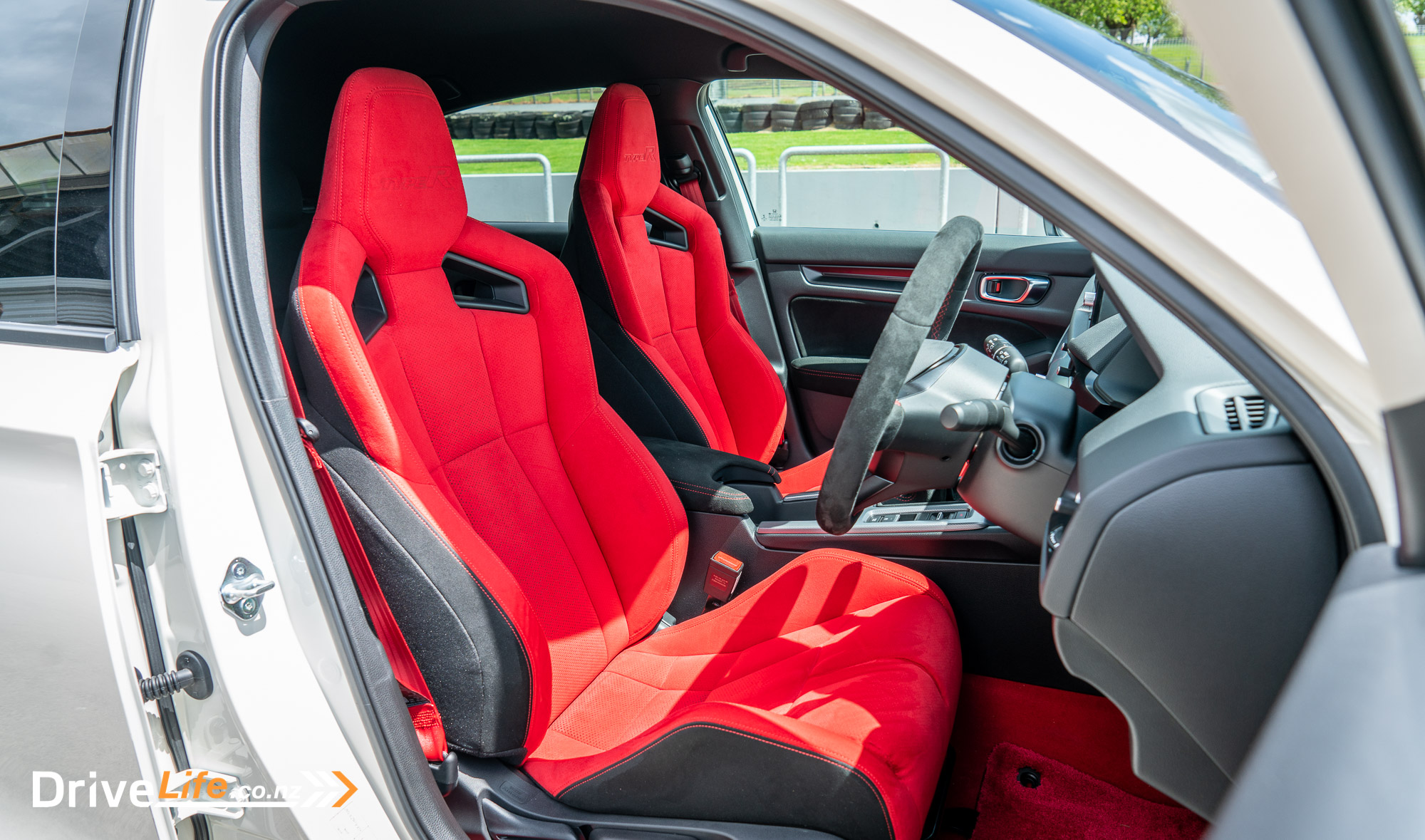
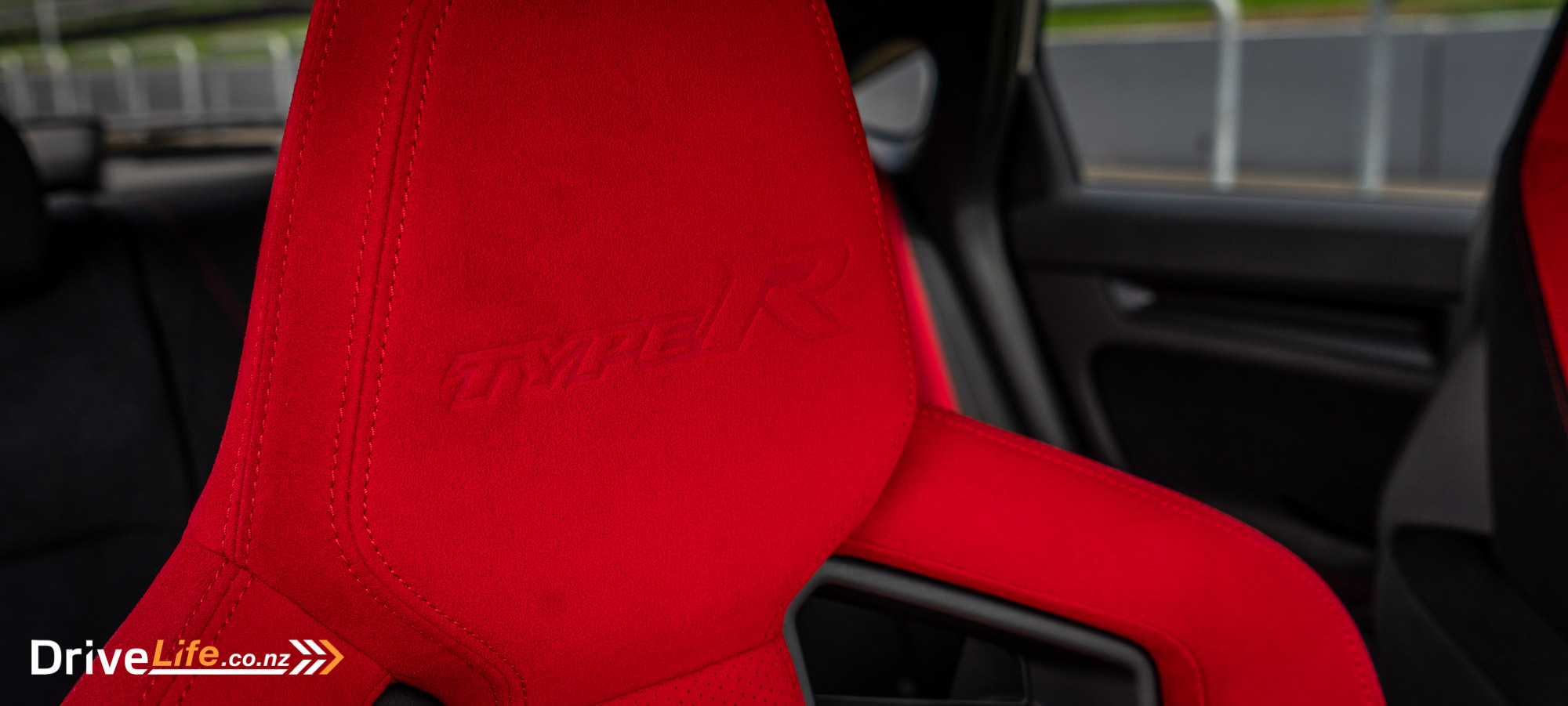
The result is absolute positioning perfection. Everything is exactly where and how you want it to be. The driving position is excellent. The seats support and grip you in all the right places. The gearstick falls near perfectly to hand, and the pedals are ideally spaced, for those that like to heel and toe. Of course, the Type R has auto rev-matching software, but more on this later.
Once you’ve escaped the fantasy of carving mountains, you’ll begin to appreciate that this is the highest quality interior of any Civic Type R to date. The dashboard, infotainment and central climate controls are all carried over from the Civic Sport – which is perfectly fine by us – the modern Civic has an excellent interior.
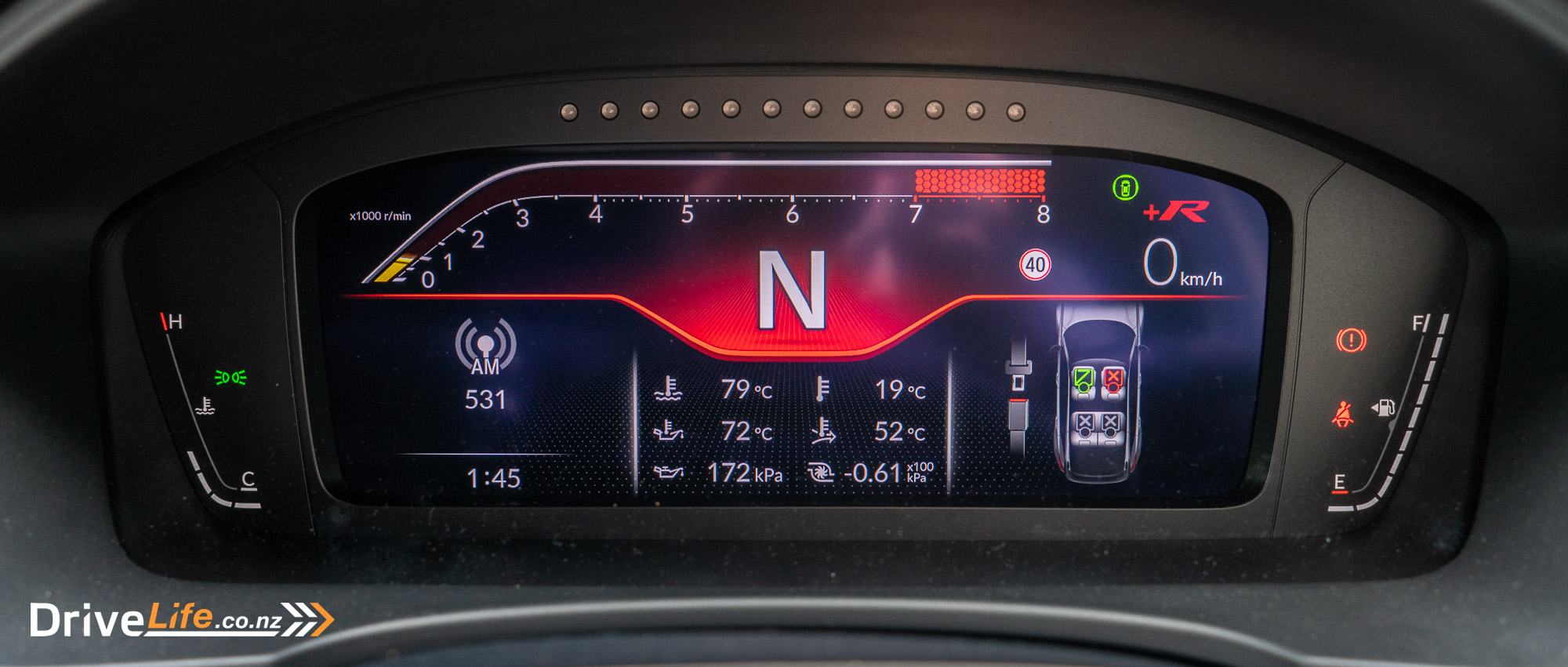
On the infotainment side, Honda has saved some unique software for the Civic Type R. This includes Honda’s LogR App, which was designed exclusively for the Type R. Previously, it was only available on your smartphone. LogR provides different engine metrics, performance monitors, lap timers and more. The Civic Type R also gains a full digital dash cluster, with varying graphics based on the drive mode. Select R+, the tachometer and gear lever positioning dominate the screen, with digital shifter lights bordering above.
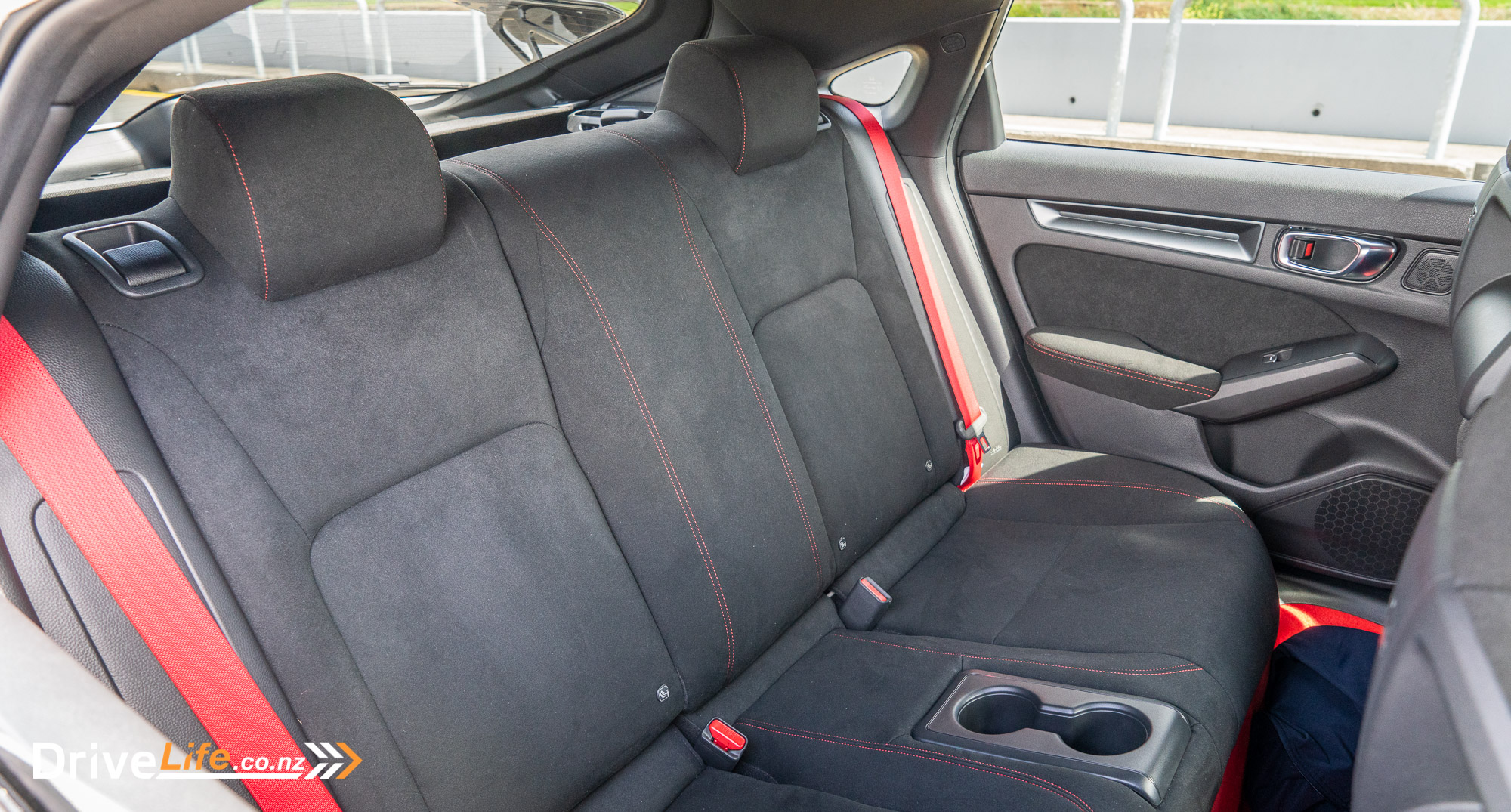
Even though the Civic Type R is a completely different animal to the Civic Sport, practicality still runs in the family. Adults can comfortably perch in the back, despite the rear-middle seat being deleted. The boot even has enough space to give a SUV a run for its money.
Looking back to the 2015 and 2017 Honda Civic Type R
Before getting behind the wheel of the latest Type R, Honda had a history lesson in store for us. They’d brought along two of the previous generation Civic Type Rs to start the day with, to give us a gauge of just how far the new car had come.
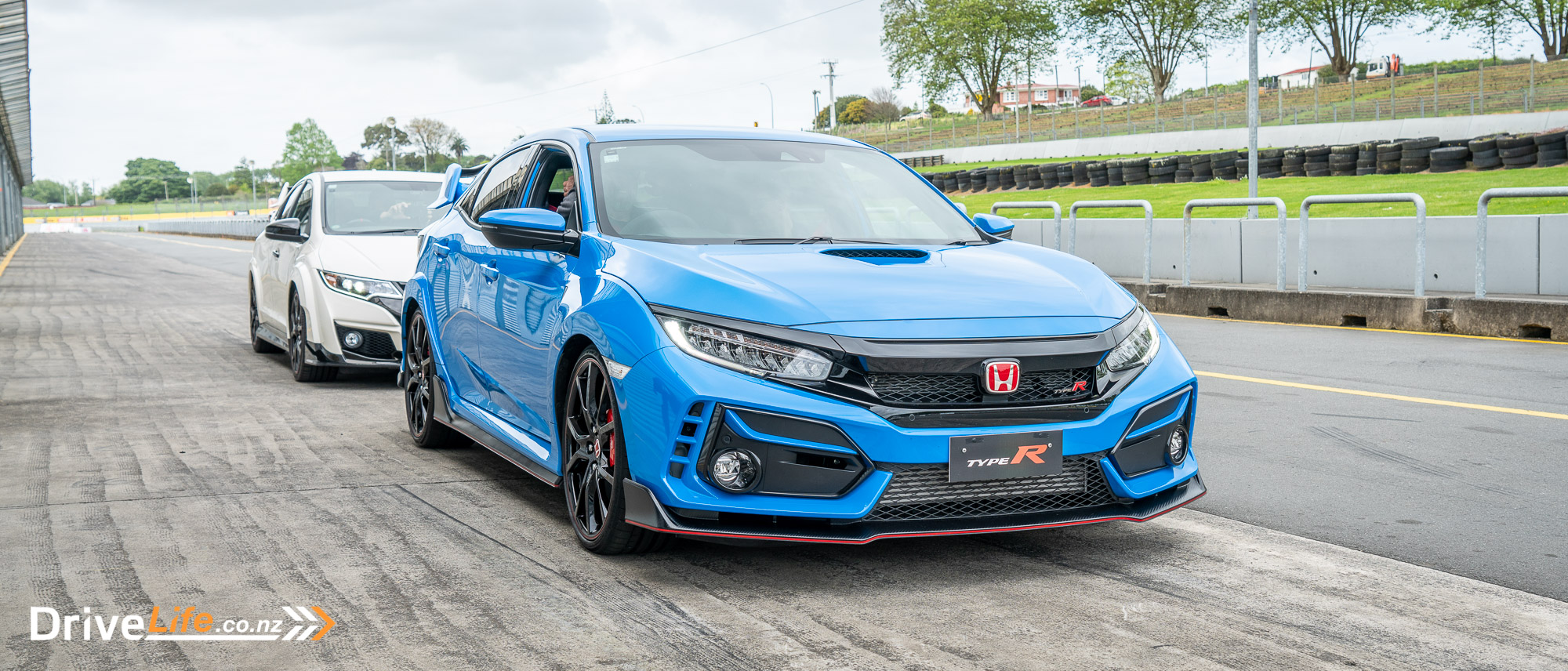
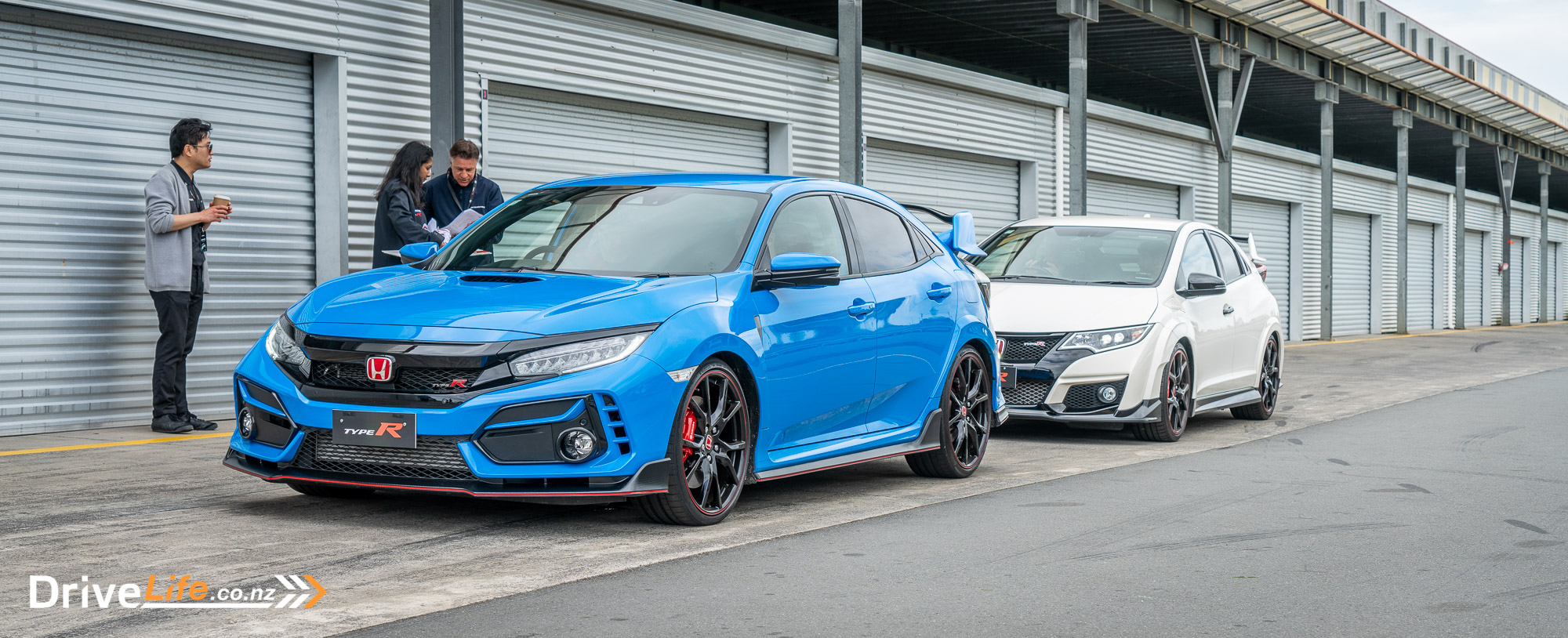
Up first was the FK2. Manufactured in Swindon, England, the FK2 was Honda’s first turbocharged Type R. It took the fairly pedestrian-looking Civic Euro Hatch, and turned it into something savage. The FK2 certainly looks the part, with stuck-on arches, bodykit and a dramatic rear wing. Undoubtedly, the FK2 influenced the design of the later Type R.
Being the first Type R with forced induction from the factory, one could argue that this was an experimental car for Honda. The export numbers would certainly agree. Japan only received 750 units of the FK2 Type R. As for New Zealand, we never received it.
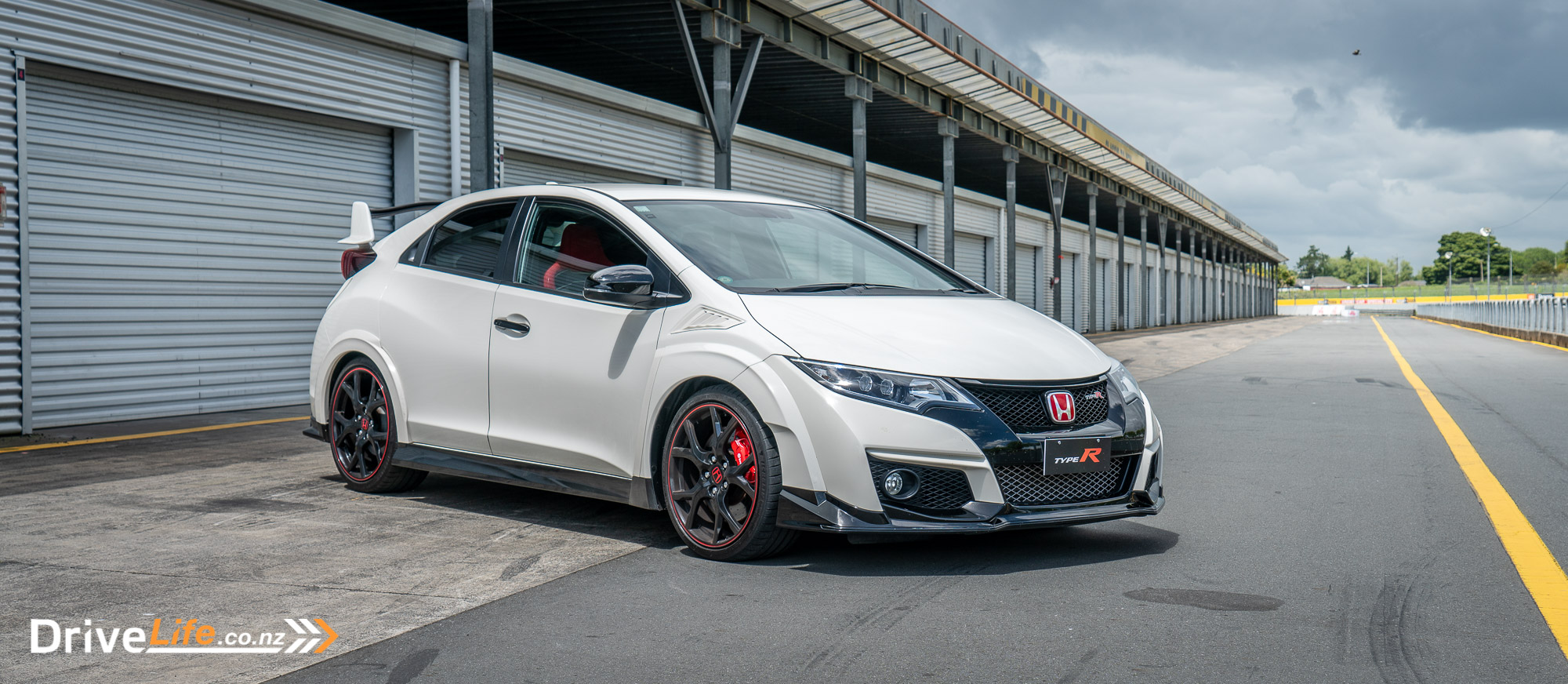
It is a shame we missed out, because the FK2 certainly wasn’t experimental in the way it performs.
The designers of the FK2 must have had a penchant for 90’s turbo cars. Powering down the back straight of Pukekohe, the FK2 was pumping-out wonderful turbo noises. The engine has slight turbo-lag, but rewards you with an exciting powerband. The FK2’s short wheelbase and aggressive dampening allows it to change direction quickly, making the FK2 feel darty and light on its feet. The turn-in is excellent, the brakes are mighty and the gearbox is quintessentially Honda (and that means it’s really good).
Although, it’s far from perfect. The driving position is quite high in the cabin, and the engine doesn’t feel as powerful as the later cars, and it can get a bit squirrelly under hard braking. Regardless, the FK2 is a mighty little hot hatch, and a proper Type R. Whoever got their hands on an FK2 will still be grinning.
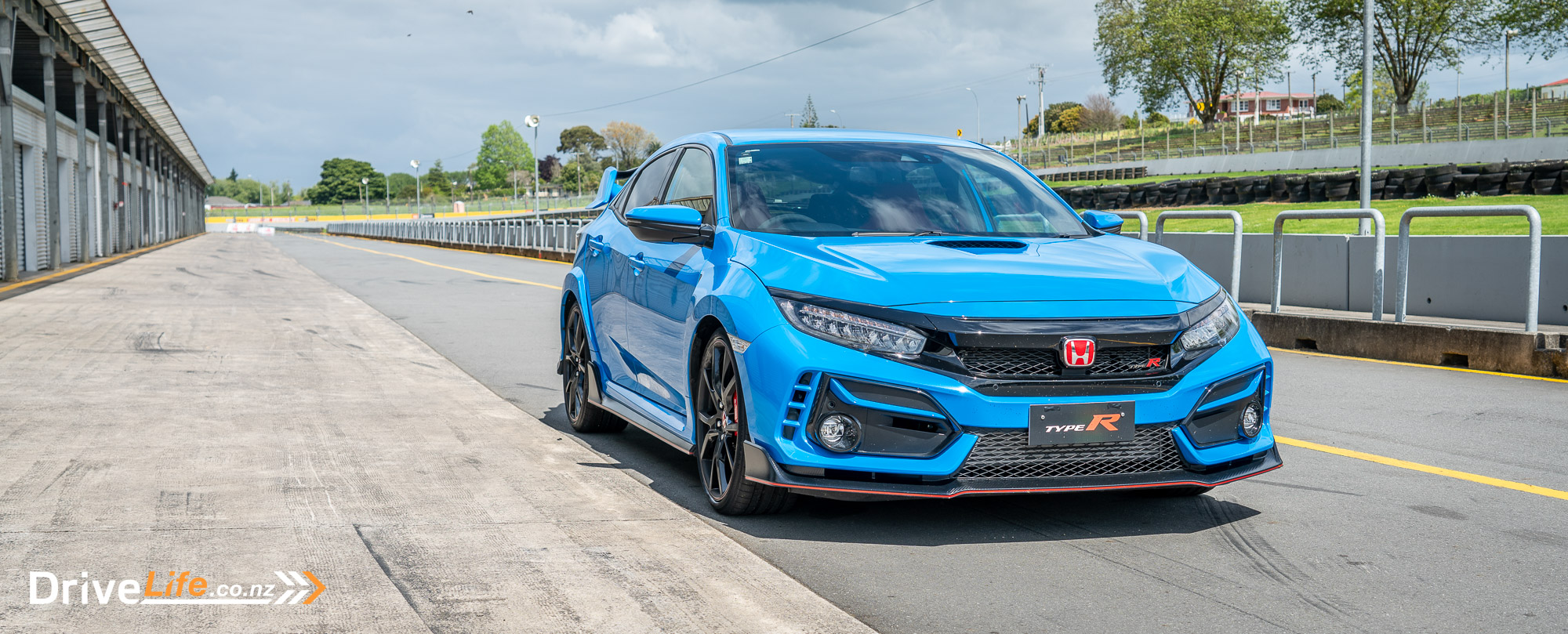
After the FK2, we jumped into the FK8. The FK8 is the modern Civic Type R as we know it. Released from the same Swindon facility in 2017, its mentalist styling caught envy and ire from the enthusiast community.
Whatever your view of the outside, those who jumped inside and drove it were unanimously blown away. I still think it’s one of the best modern performance cars I’ve driven.
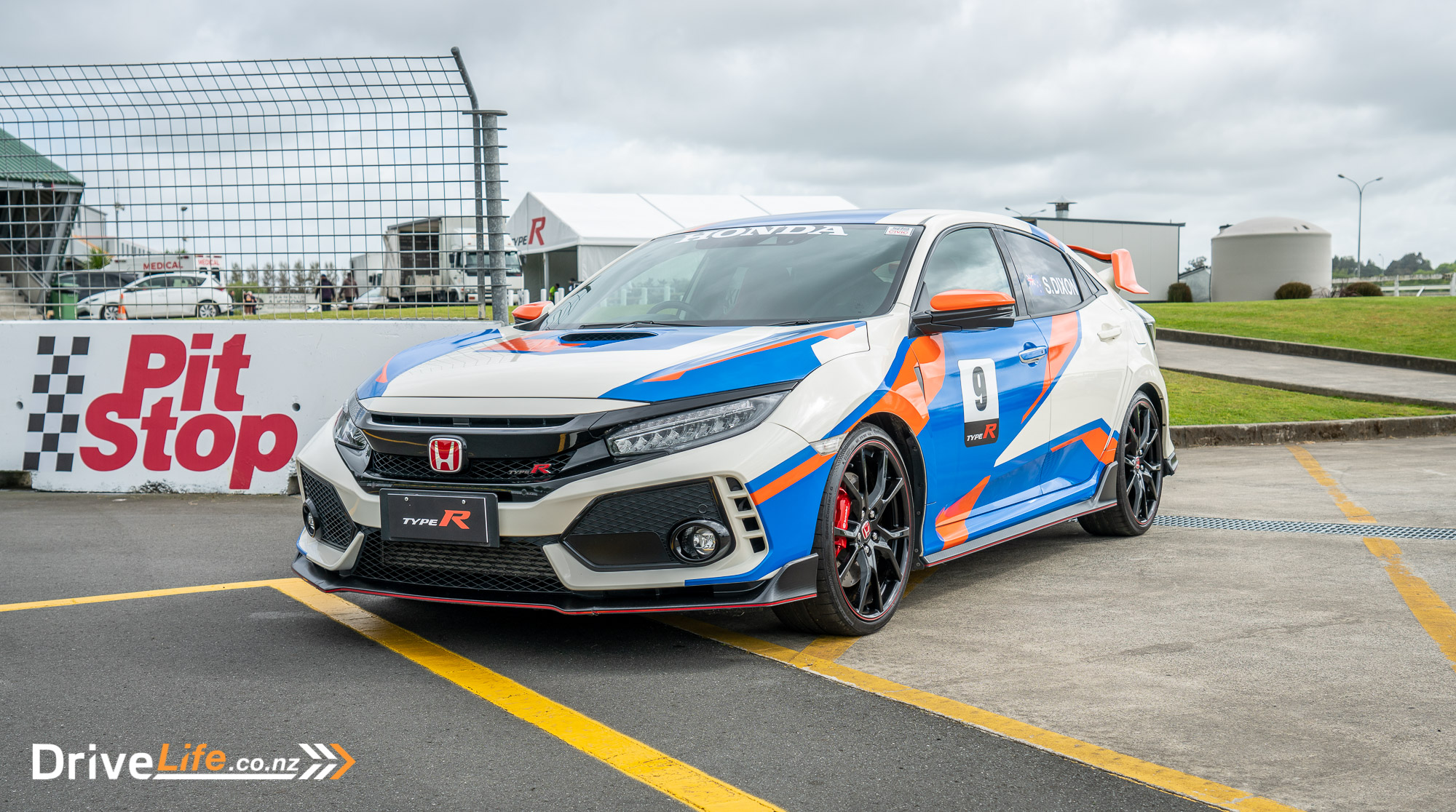
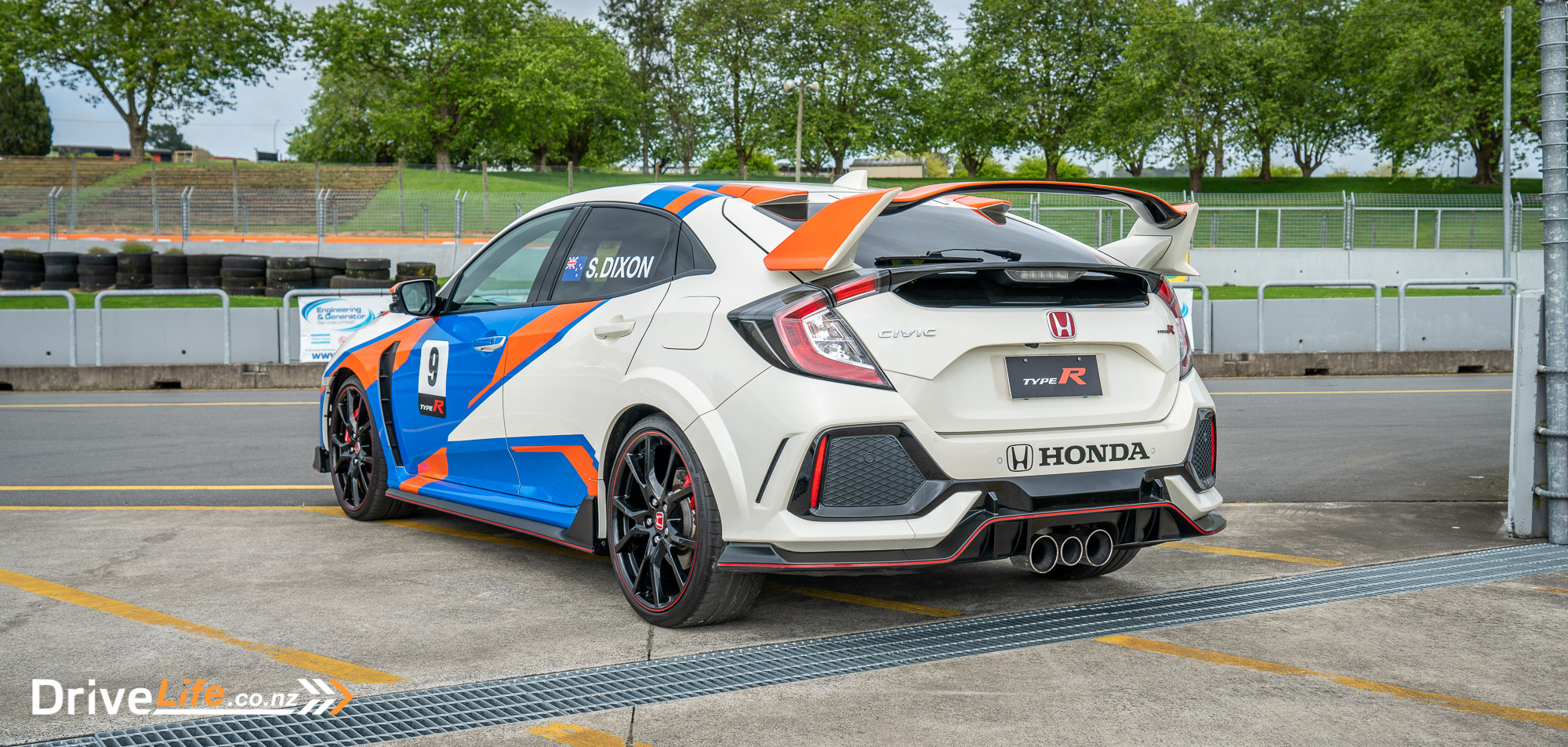
Performance wise, it’s considerably more polished than the FK2. For starters, the seating position is lower, hunkering you down into a more sports car-like driving position.
The engine tuning nearly eliminates any turbo-lag, developing more broad and consistent power across the rev-range. The engine also revs-up quicker, thanks to a single-mass flywheel over the outgoing car’s dual-mass flywheel.
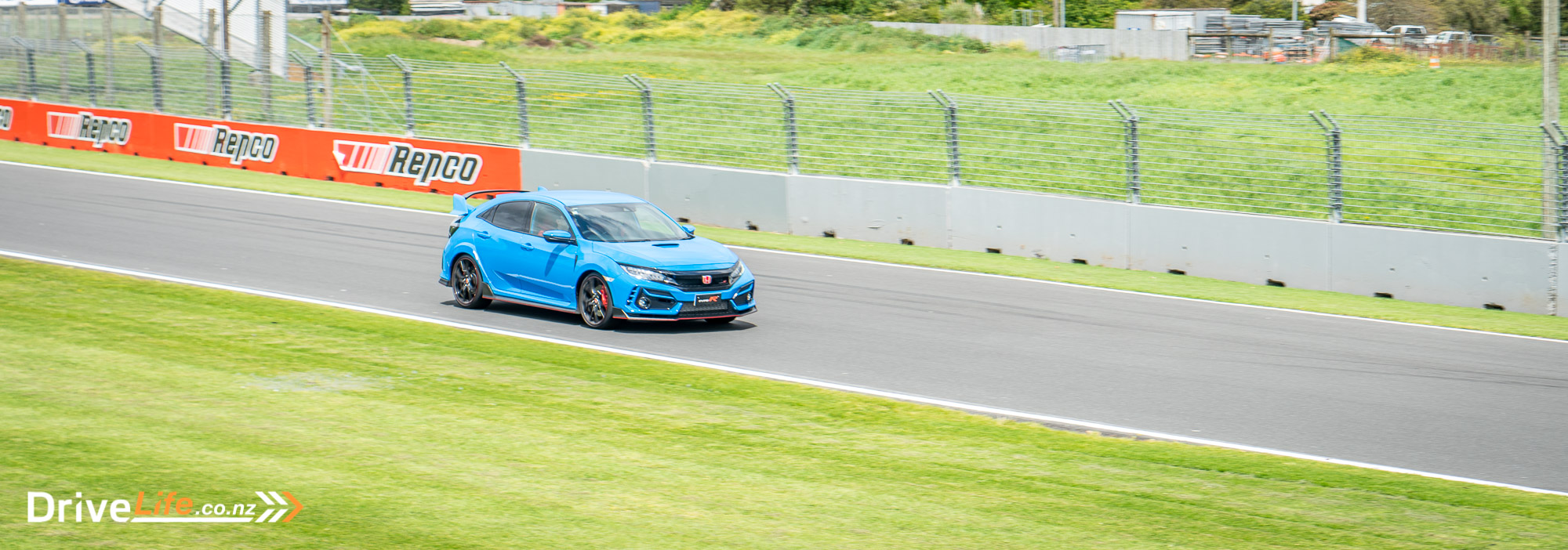
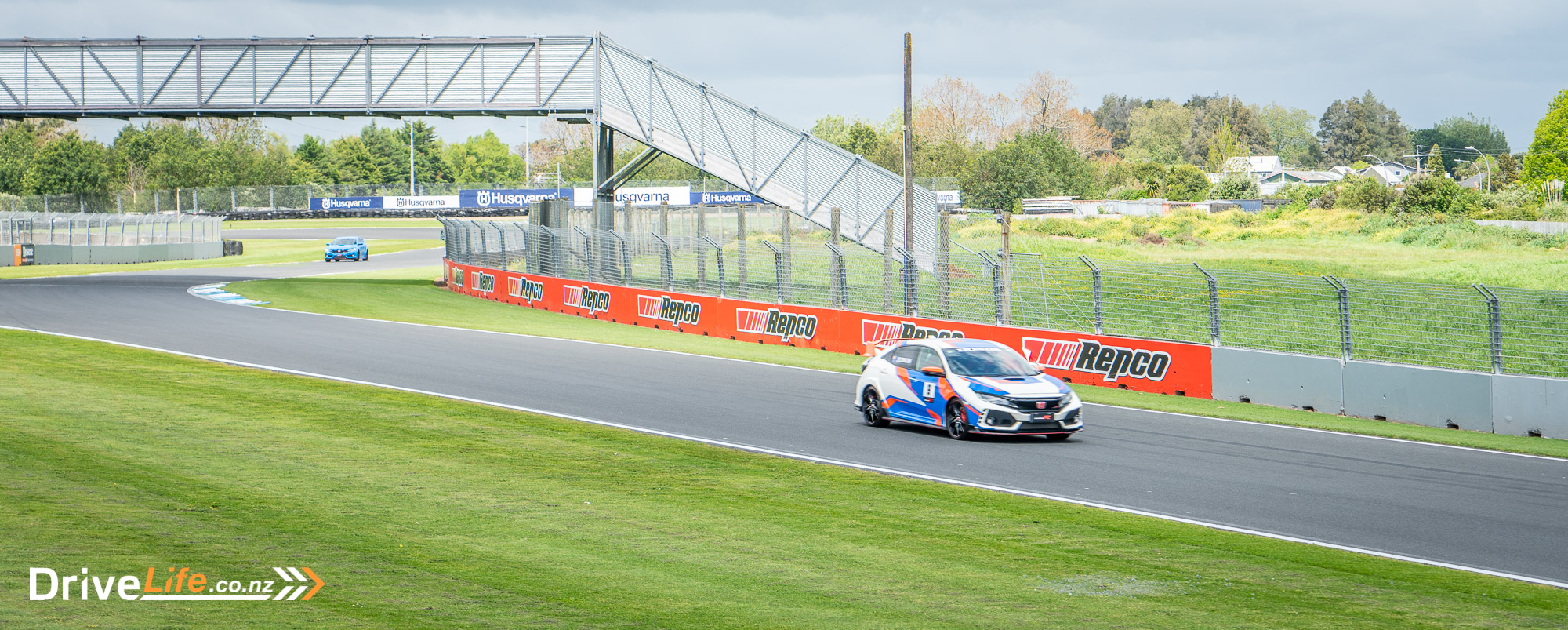
Its longer wheelbase and wider track make the FK8 more stable and progressive, particularly so under braking. A stiffened rear-end means the chassis has a more natural rotation as you direct it through a corner. These qualities allow the FK8 to trail brake like a champion. But, it was the sense of grip over the front axle that was the most striking difference. Where the FK2 feels light and darty, the FK8 feels a lot more planted and hunkered down. It’s a front-wheel drive cornering monster.
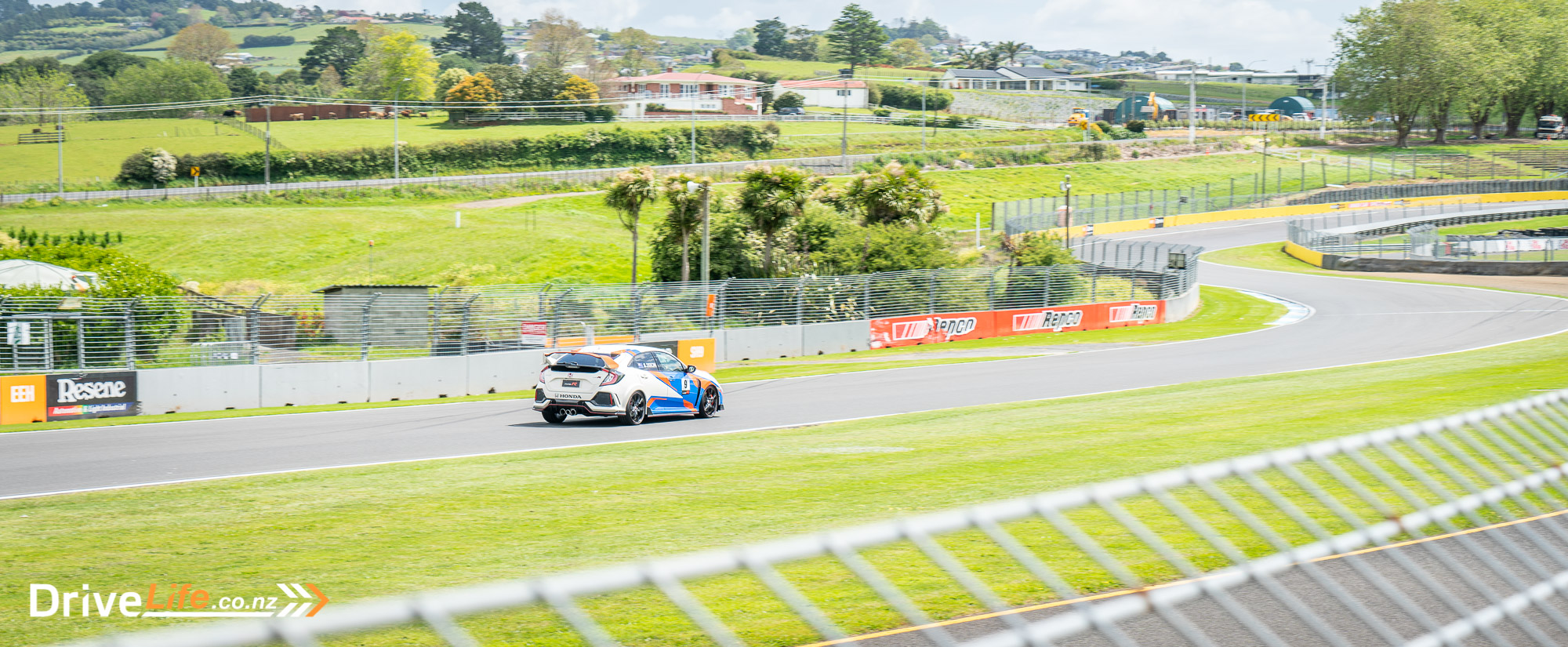
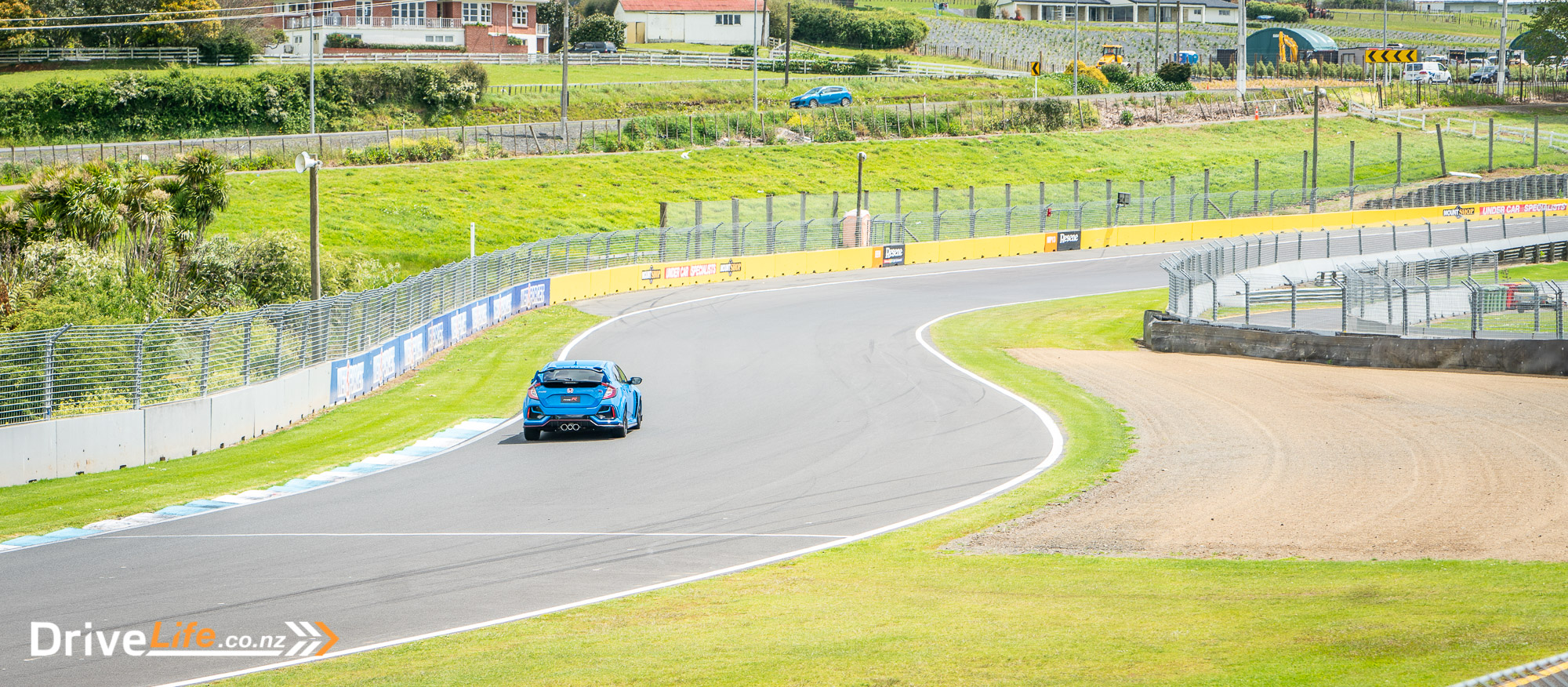
The FK8’s drawback was the noise, or rather, the absence of one. It was disappointing to have such loud exterior styling, without an accompanying exhaust note.
Despite this, after revisiting the FK8 on the track, I continue to adore it. It’s hard to see how you’d improve this formula, but according to Honda, the FL5 does exactly that.
2022 Honda Civic Type R: The Drive
Before I could get my grubby mitts on the new FL5 Type R, we convened for lunch, where Honda would also give us a presentation of all the changes Honda had made to the latest generation Type R.
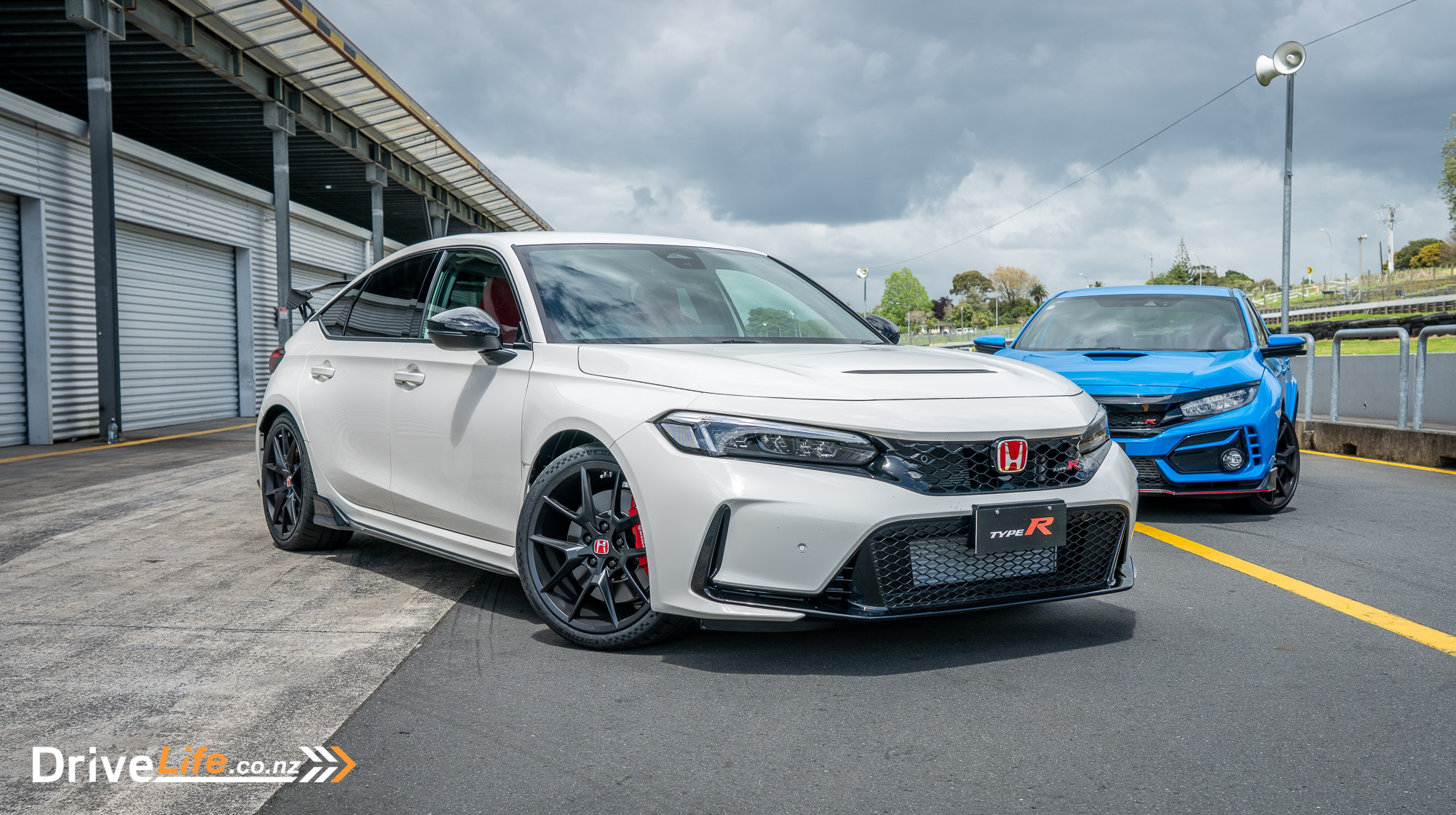
According to Honda, the FL5 was developed from the outset to be the ultimate FF sport chassis, with the aim of maximising performance on the road and track. The FL5 also marked a return of the Type R to its motherland, with the FL5 being built in Honda’s Yorii factory in Japan. As the largest engine builder in the world, the Type R is a passion project for those at Honda. The brand is aware they’re staring down at a future of electrification and hydrogen fuel cells. Honda wanted to take the opportunity, while they could, to produce another car before more regulatory limitations were imposed, forcing them to change the formula altogether.
As part of creating the ultimate FF chassis, Honda increased the wheelbase and the front track over the previous car. The chassis is also stiffer, with rear torsional stiffness up 15% over the previous model. The car rides on down-sized 19’’ alloys, wrapped with Michelin Pilot Sport 4S tyres, as standard. We’d later find out that our test vehicle was running Michelin Cup 2’s on the day.
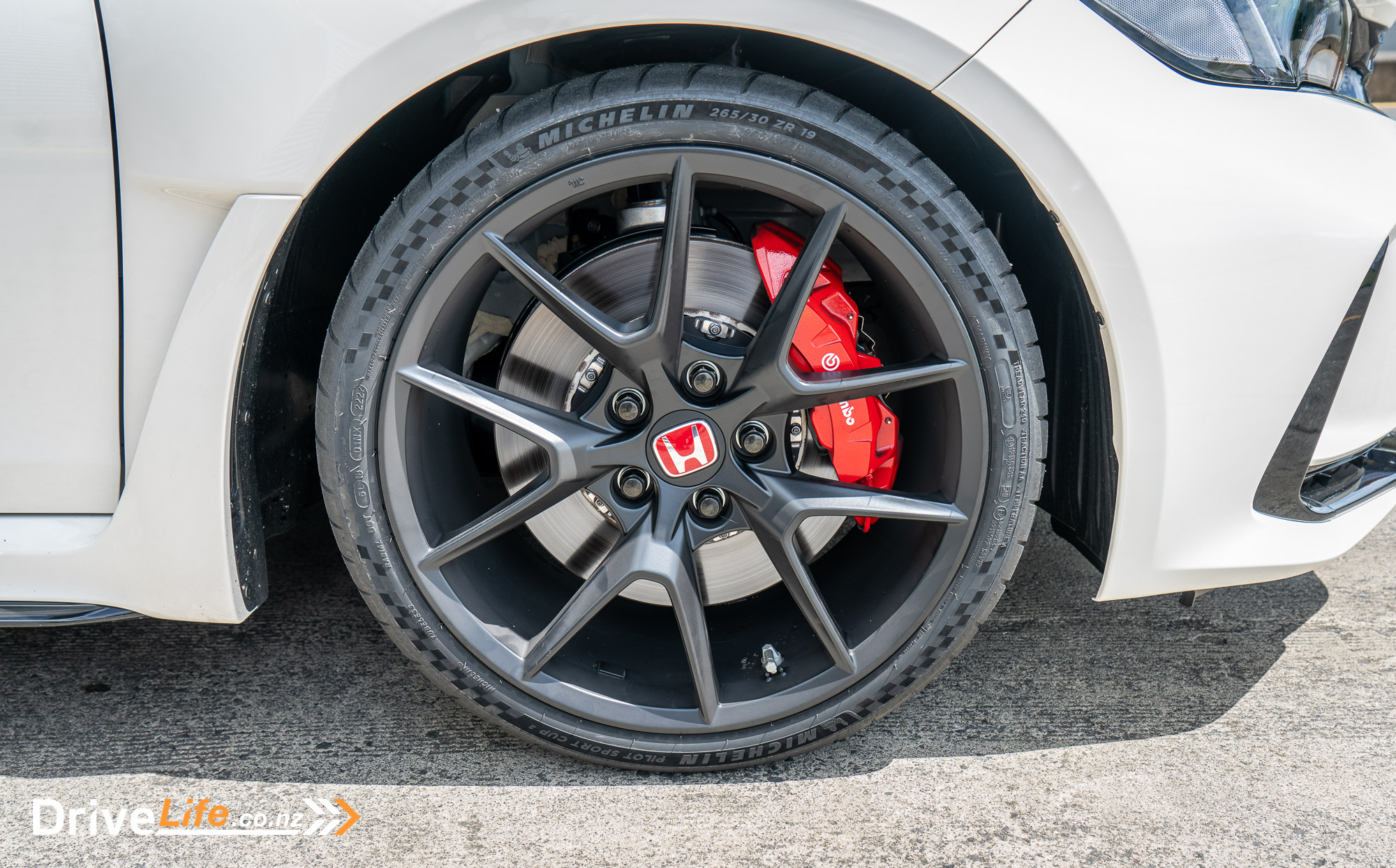
Underneath the bonnet of the Civic Type R is Honda’s K20C turbocharged four-cylinder VTEC engine, the same engine that was in the outgoing car. The K20C is a variant of the K20 motor architecture that’s been around since the early 2000’s. The K20 is an excellent engine which is over-engineered to Honda’s standard, the engines are known for their reliability and for developing huge performance numbers off relatively simple modifications. Heck, even the Aerial Atom uses a K20 engine.
For the FL5, Honda has made a series of engine tweaks, including a new and improved turbocharger, using a different housing and different sized turbo impeller. Accommodating the turbo is a bigger radiator and water jacket design. There’s also a different inlet manifold, with a new plenum design. According to Honda, not only does the performance increase, but these changes help the Type R develop more consistent power through the rev-range and be more reliable when being thrashed on the track.
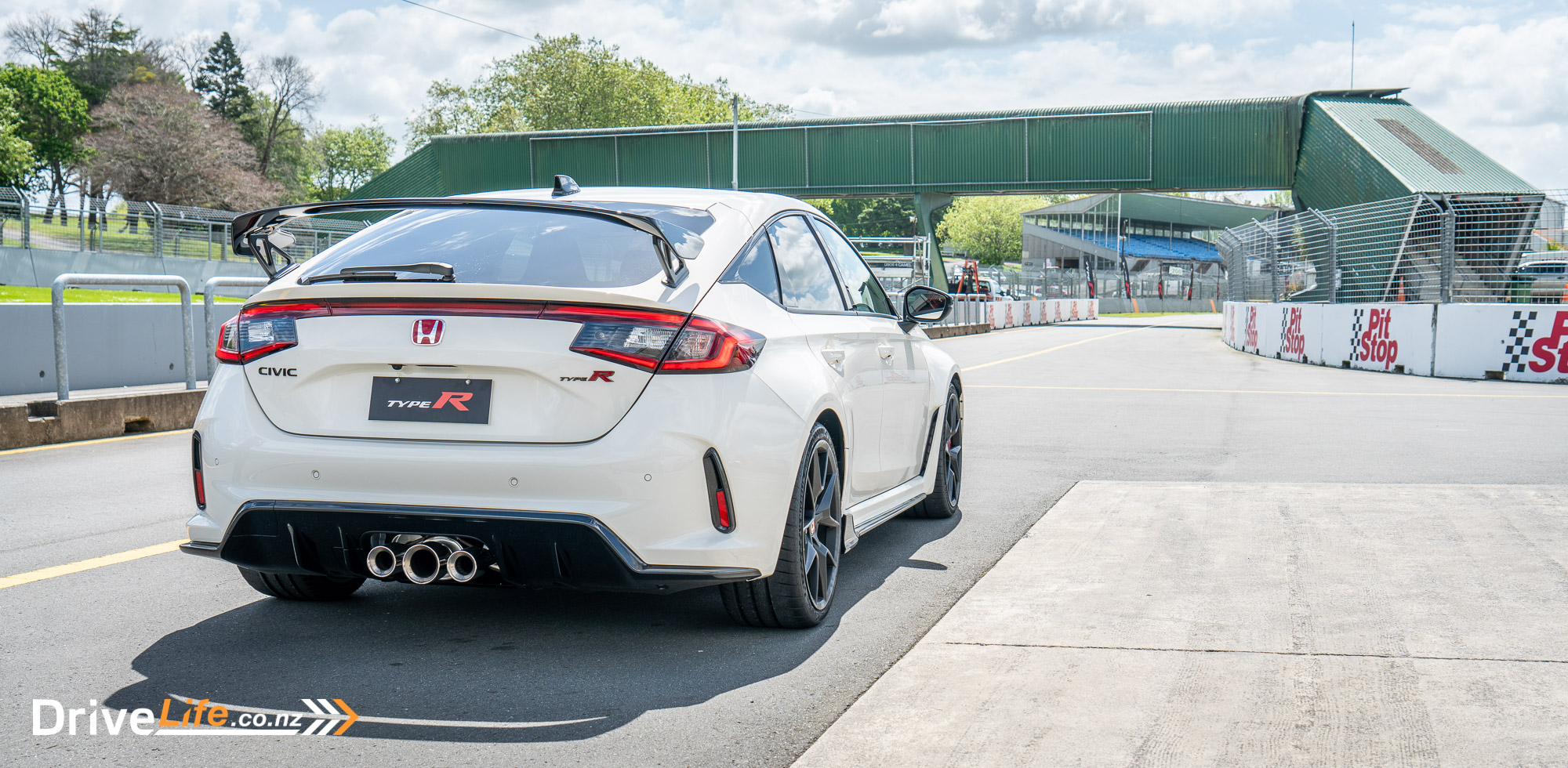
The result of these changes? The Civic Type R outputs 235 kW of power at 6500rpm and 420 Nm of torque between 2,600-4,000rpm, up 7kW and 20Nm over the outgoing car. The engine also revs-up quicker, thanks to a new lightened flywheel. Hondas also tweaked the gearbox, added two-piece brakes for better cooling, and added an improved exhaust with 13% better flow rate.
After lunch, Honda was prepared to turn us loose in the new FL5. We had a few laps to ourselves, and being fresh out of the previous-gen cars, I was relying on my ultra-sensitive bottom to recognise the differences.
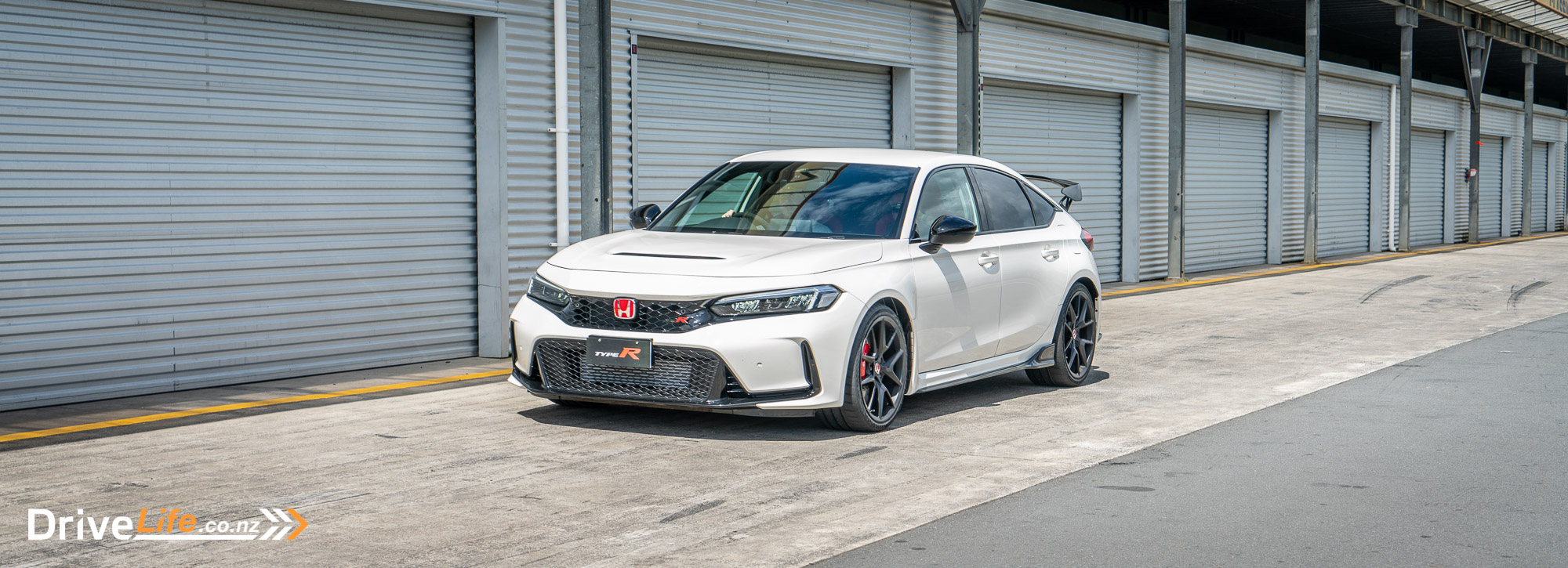
With expectations set high, we set out on track. Admittedly, I was expecting the FL5 R to be good, but even being mentally primed doesn’t prepare you for how incredible the FL5 is around a track.
Understeer isn’t even a word in Honda’s dictionary. I’m convinced of that. Just how the FL5 manages to change direction without sacrificing any grip is mind-boggling. The turn-in is exceptional and the added stiffness at the rear allows the chassis to rotate fractionally better than the old car.
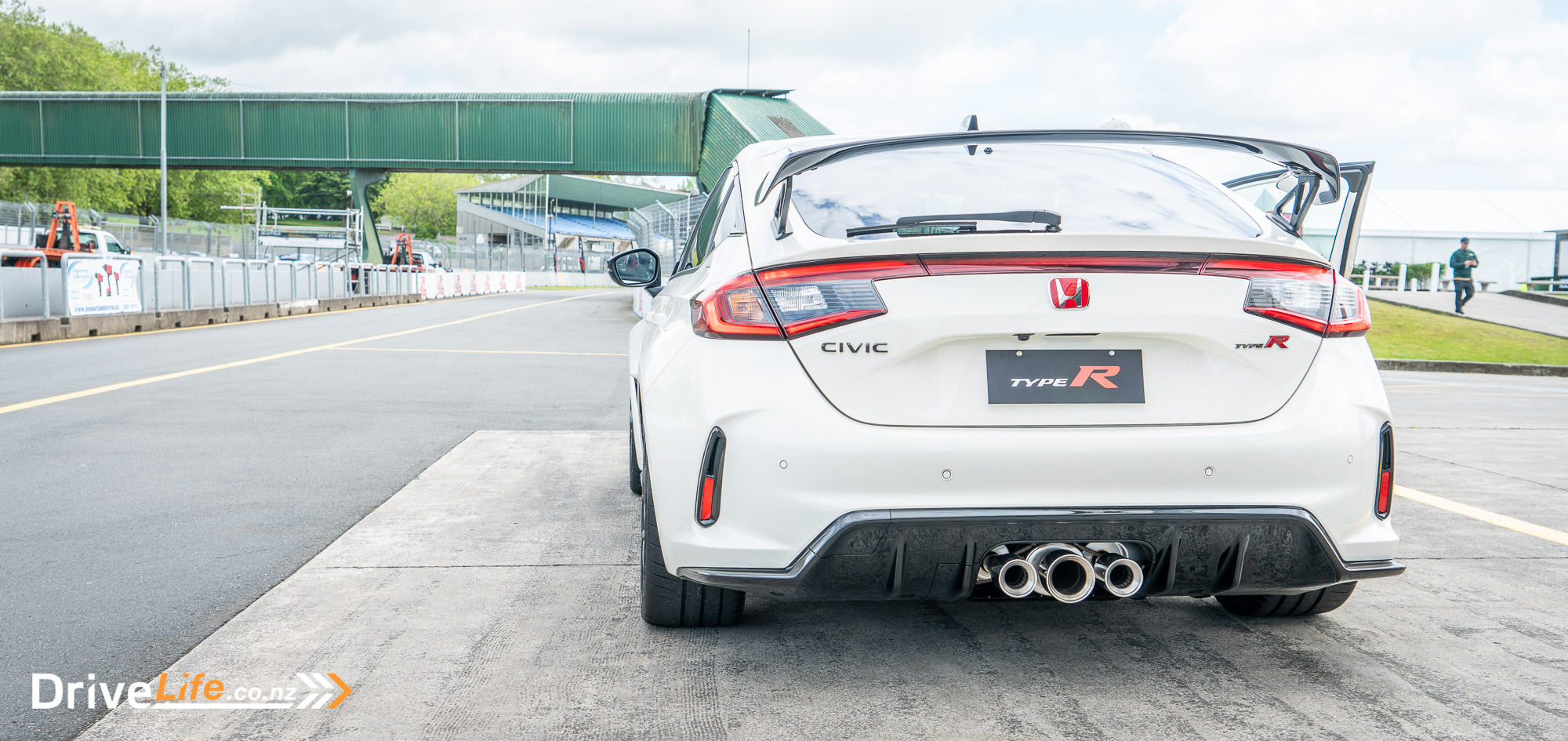
The FL5 also feels lighter on its feet over the previous car, evidenced by how quickly it can change direction. It’s as if Honda’s managed to combine the dartiness of the FK2 with the sheer grip of the FK8. It obliterates a corner with incredible pace.
One of the more noticeable differences was the body stability under braking. The FK8 was already good, but again, the FL5 just goes that extra step further.
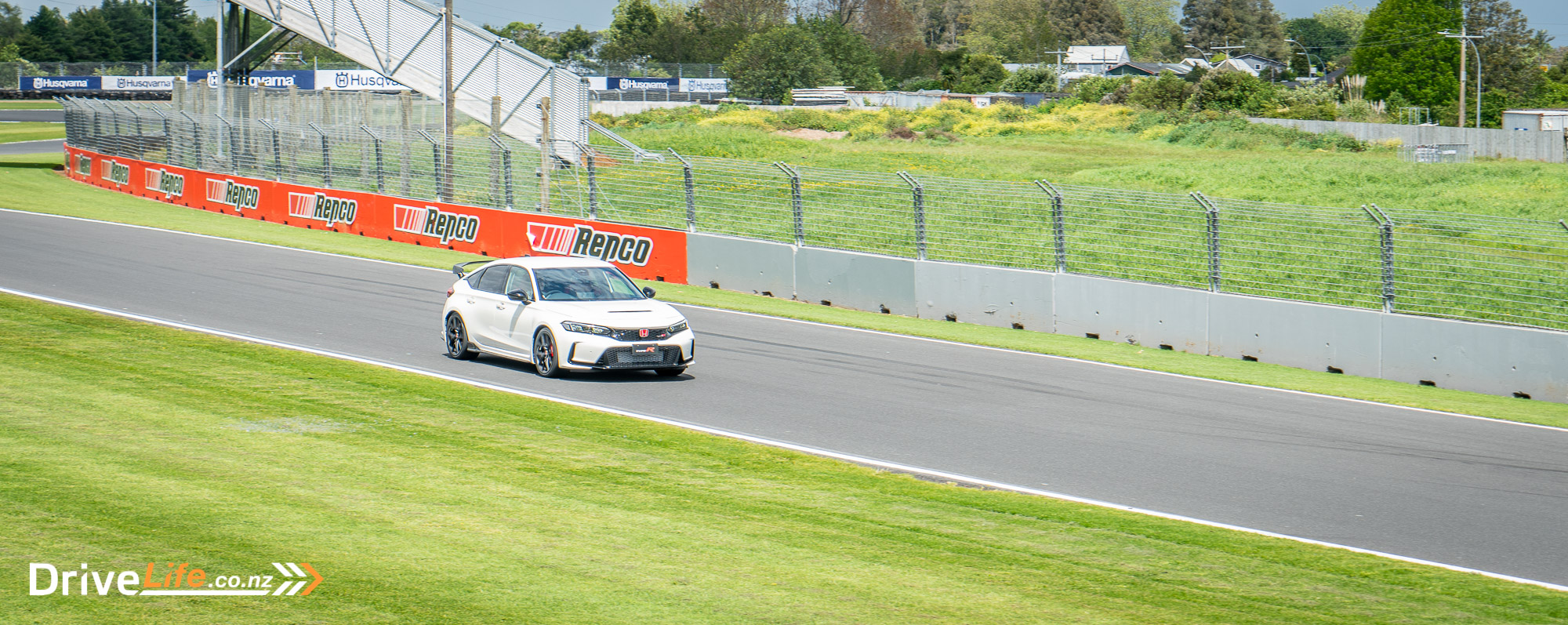
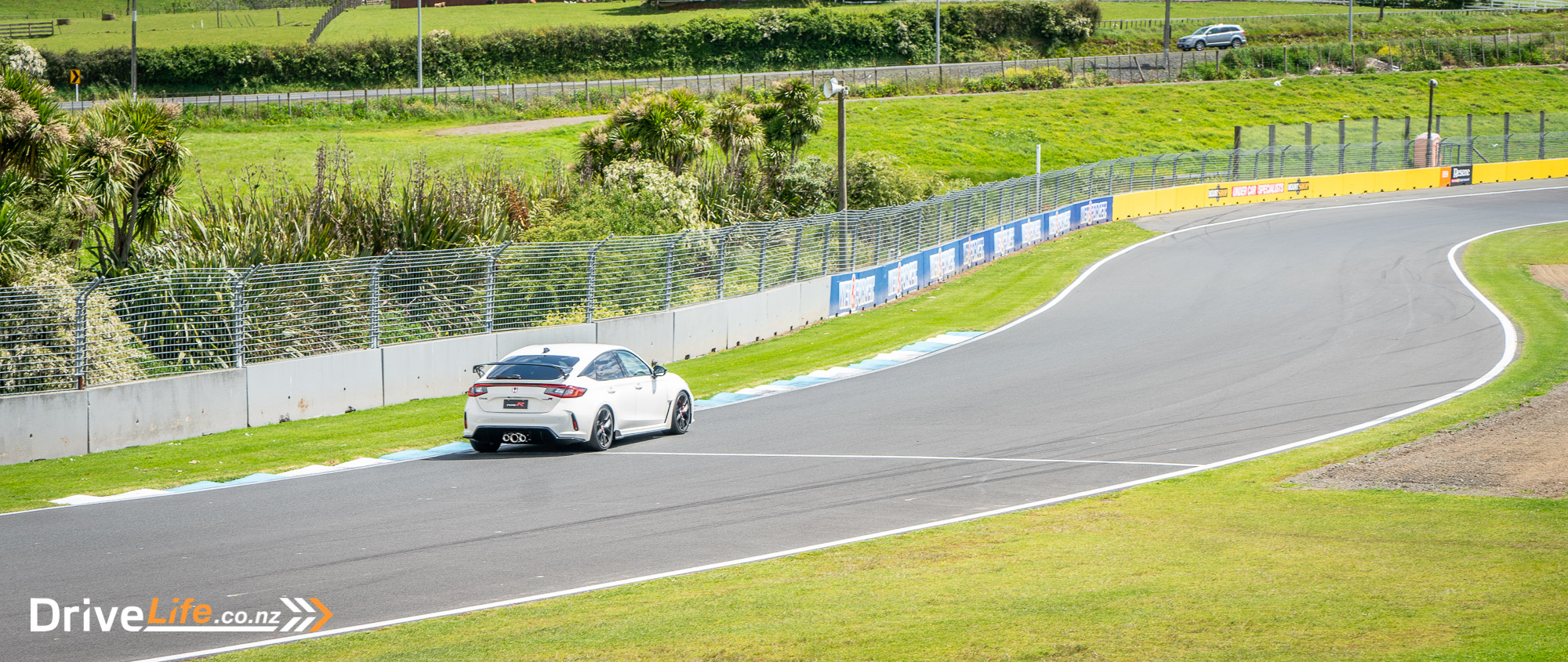
Pukekohe’s long sweeping straights gave us ample opportunity to let the Type R’s engine stretch its legs. Despite being turbocharged, this K20C engine loves to be revved-out. Sure, it mightn’t scream to the redline like the older naturally-aspirated VTEC engines, but it still has plenty of character. Too often do hot-hatch manufacturers fall into the trap of producing something that’s fast, but lacking in character. The Type R suffers no such fate.
Honda’s also somehow managed to find an extra dollop of power underneath the curve, because if those numbers on the dash are to be believed, this Type R hauls ass on the straight. Out of a corner, the engine is a fraction more responsive than the older car, building pace and retrieving you those extra tenths of a second on your lap time.
Honda produces some of the best manual gearboxes in the business. The shifter feel in this Type R is superb, and it’s easily one of the best manual gearboxes on the market today. I’d stop short of saying it’s Honda’s best ever, because they’ve definitely done better in the past *coughs* S2000.
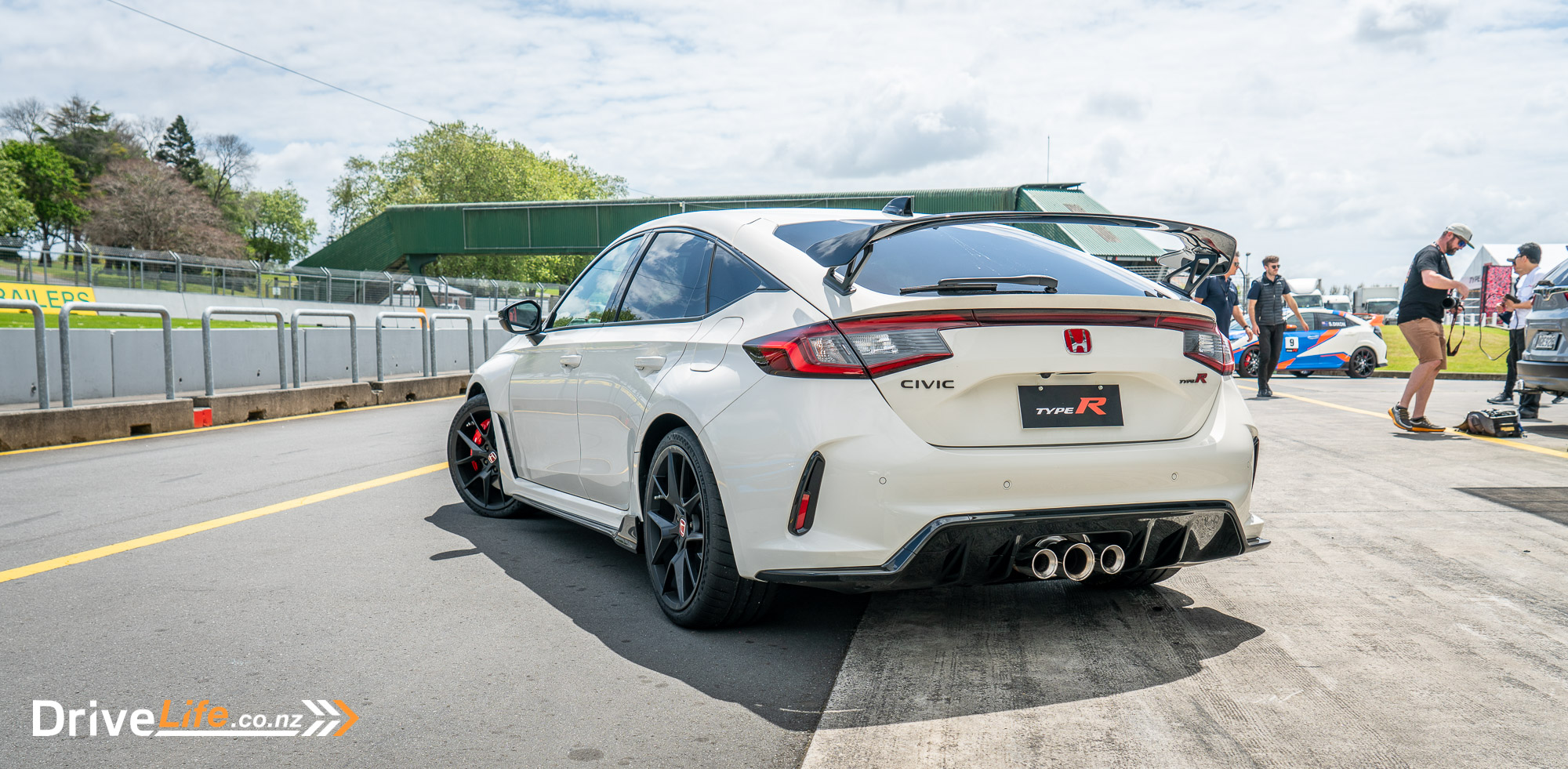
Honda claims to have tweaked it for this generation, but honestly, it was already so good that each increment is going to be less noticeable. The main difference is in the supporting rev-matching software. It’s quicker and sharper than before – by 10% Honda will say. It also makes a much more satisfying blip on the downshift.
For most of our test laps, we ran in the Type R’s Individual mode. It’s a new configurable drive mode for the FL5, not previously offered in the other cars. This allowed us to keep everything on full attack mode, but dial back the adaptive dampers. For a bumpy track like Pukekohe, Honda’s R+ mode sets the dampers a bit too firm for the conditions.
Despite having a new, freer flowing exhaust, noise is still a low point for the Civic Type R. Outside the car, there’s not a great deal of difference between the FK8 and the FL5. That said, Honda does do some artificial noise amplification in the cabin, and they have made it sound better – particularly so in R+ mode. Unfortunately, we live in a world of noise restrictions and petrol particulate filters, so I suppose this is just the reality of the situation. Still, Hyundai manages to get around this with the i30N.
Overall, Honda has made many incremental improvements to the FL5. In combination, they amount to a noticeable improvement in performance. A talented driver would certainly be able to extract some seconds off their lap-time as a result, and we already have evidence of this – Honda’s already beaten their own record at Suzuka Circuit for the FF class. I guess we’ll watch this space for when the official Nurburgring time is released.
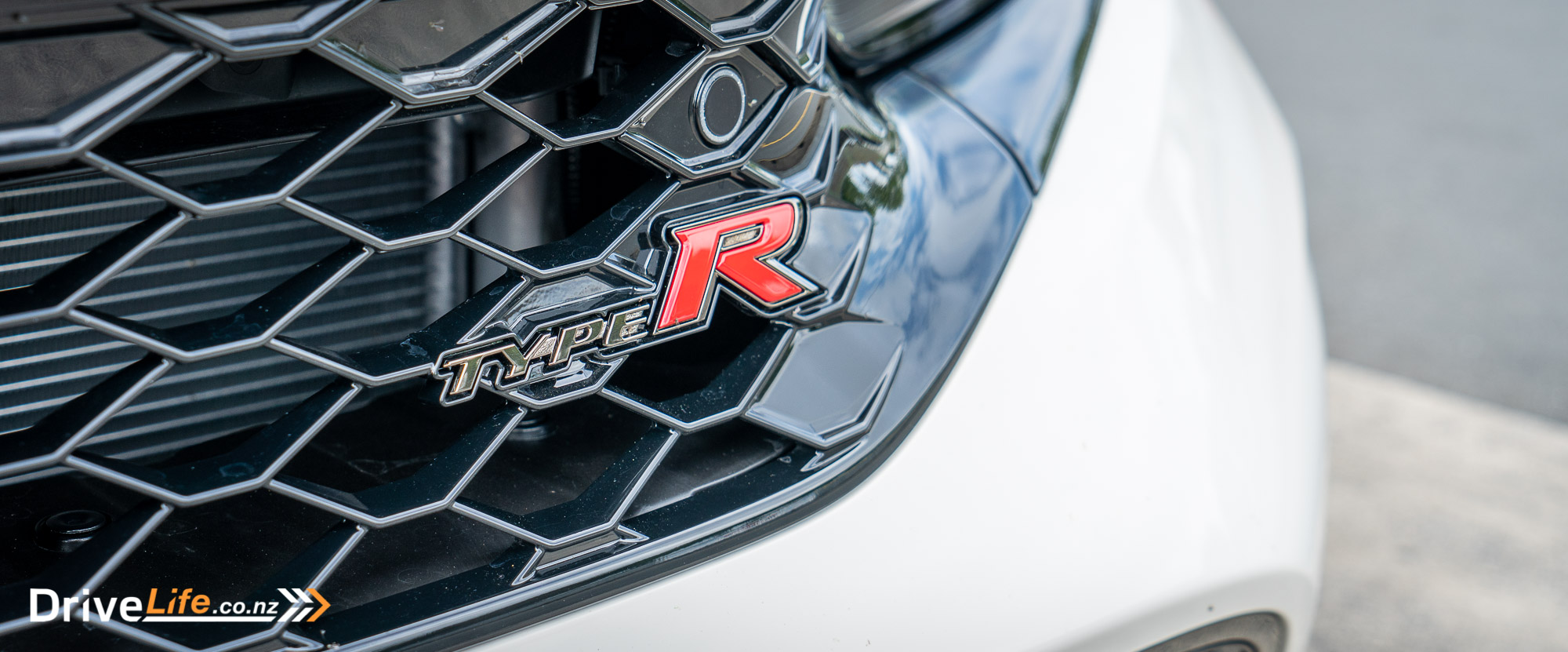
Final remarks
Although our day at Pukekohe was only a brief introduction, the new Civic Type R blew me away. The new FL5’s aesthetic has matured, the cabin is high quality, and it will demonstrably demolish a racetrack. Sure, the FL5 might be described as a mild evolution from a technical perspective, but the incremental changes underneath make the new Type R even sharper, compared to the already outrageous FK8.
Above all, it shows that Honda has refined the FF formula to a fault, which will be remembered and appreciated by enthusiasts as we’re shoved towards an electrified future. Inevitably, a time will come when Honda will need to change, or discard this formula altogether. The laps at Pukekohe were a fitting analogy, given that the track is due to close for good, early next year.
If the FL5 proves to be Honda’s last, the engineers should be able to rest happy knowing what they’ve created, having done true justice to the Type R badge and all those before it.
Our full road test of the Civic Type R is a few months away. That day cannot come soon enough.
Key details
| Price | $69,000* |
| Colours | · Championship White · Rallye Red · Boost Blue Pearl · Crystal Black Pearl · Sonic Grey Pearl |
| Power | 235kW @ 6500rpm |
| Torque | 420Nm @ 2600-4000rpm |
| Tyres | 265/30/19 – Michelin Pilot Sport 4S |
| When is it available? | Reservations open from 1 November 2022 |
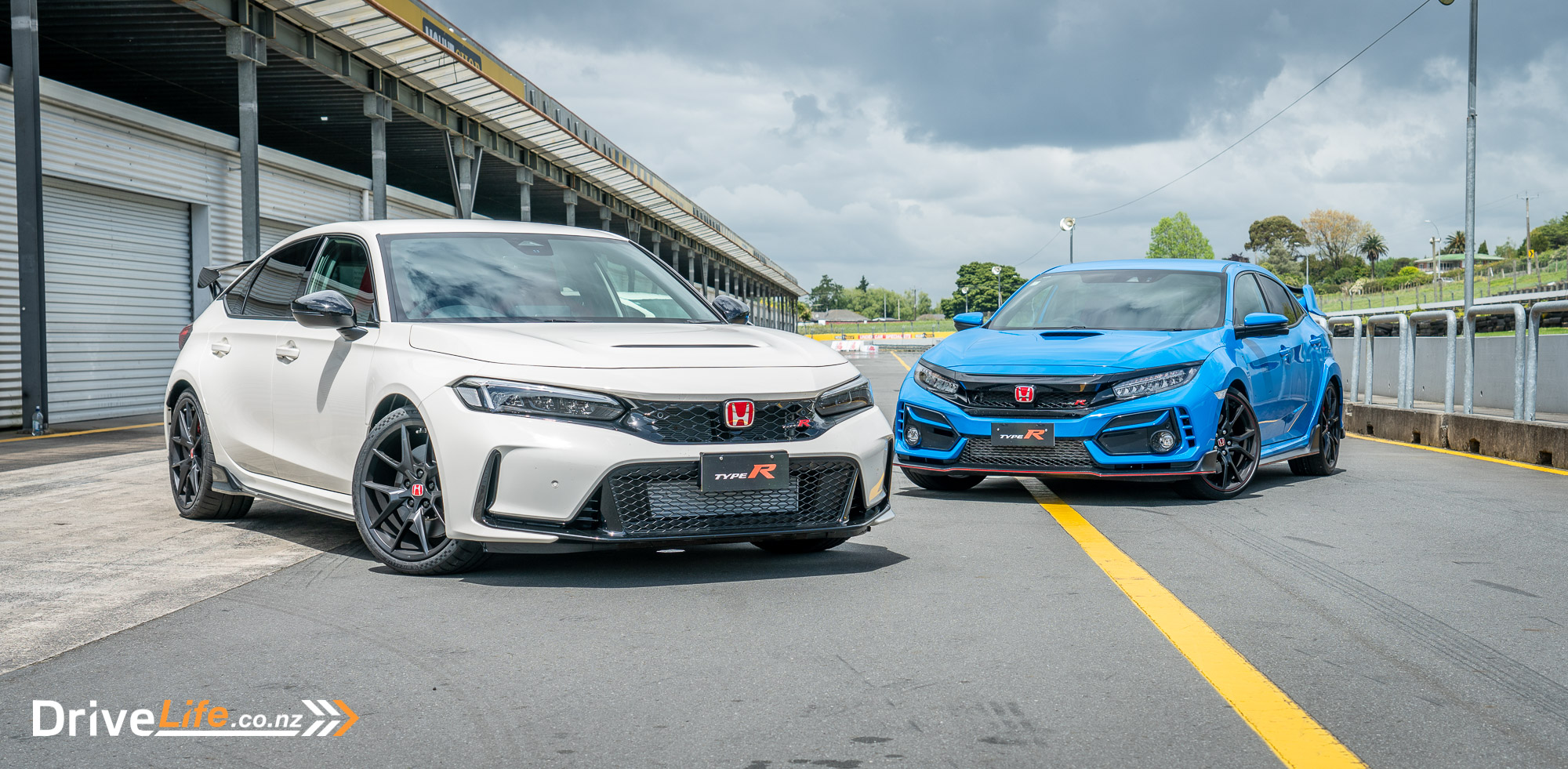
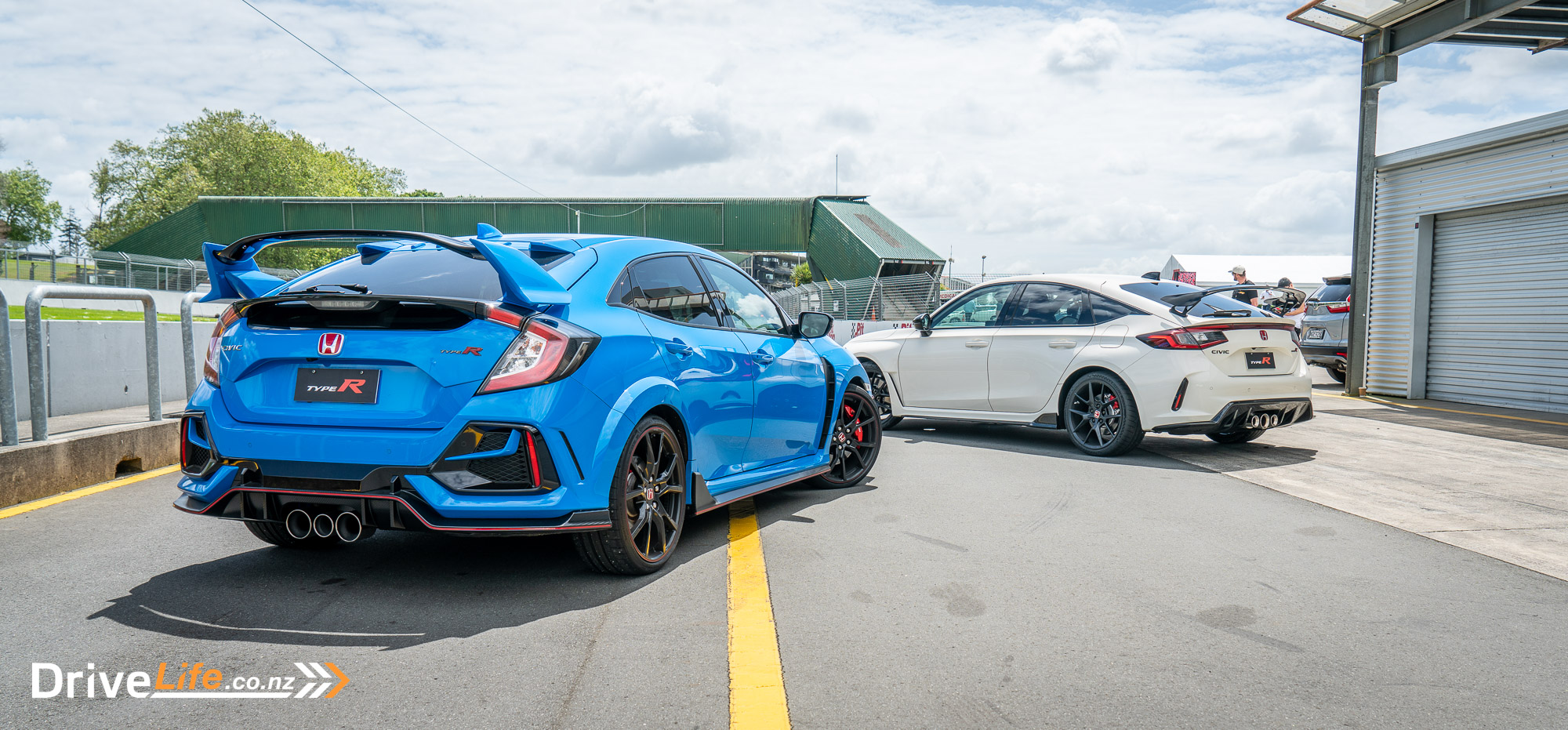



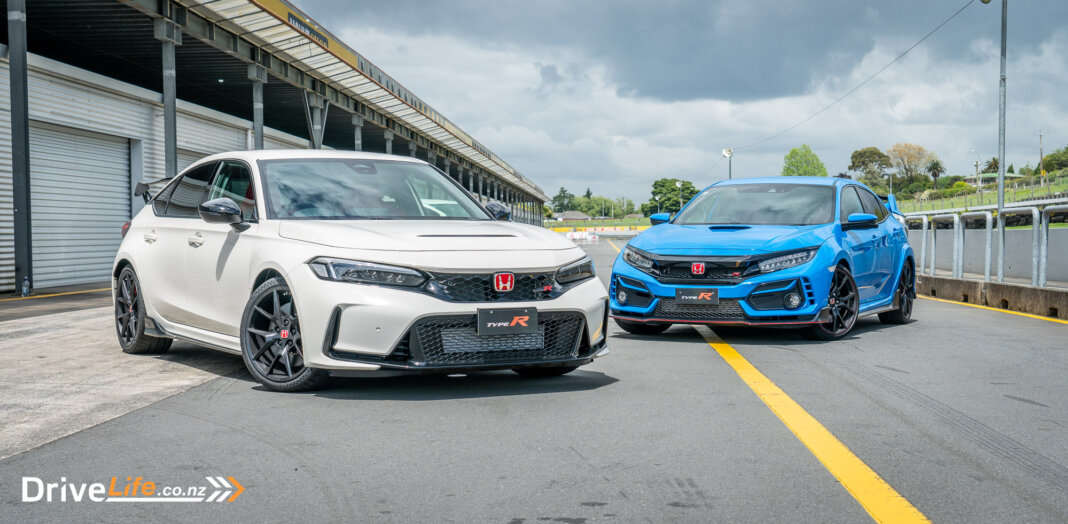
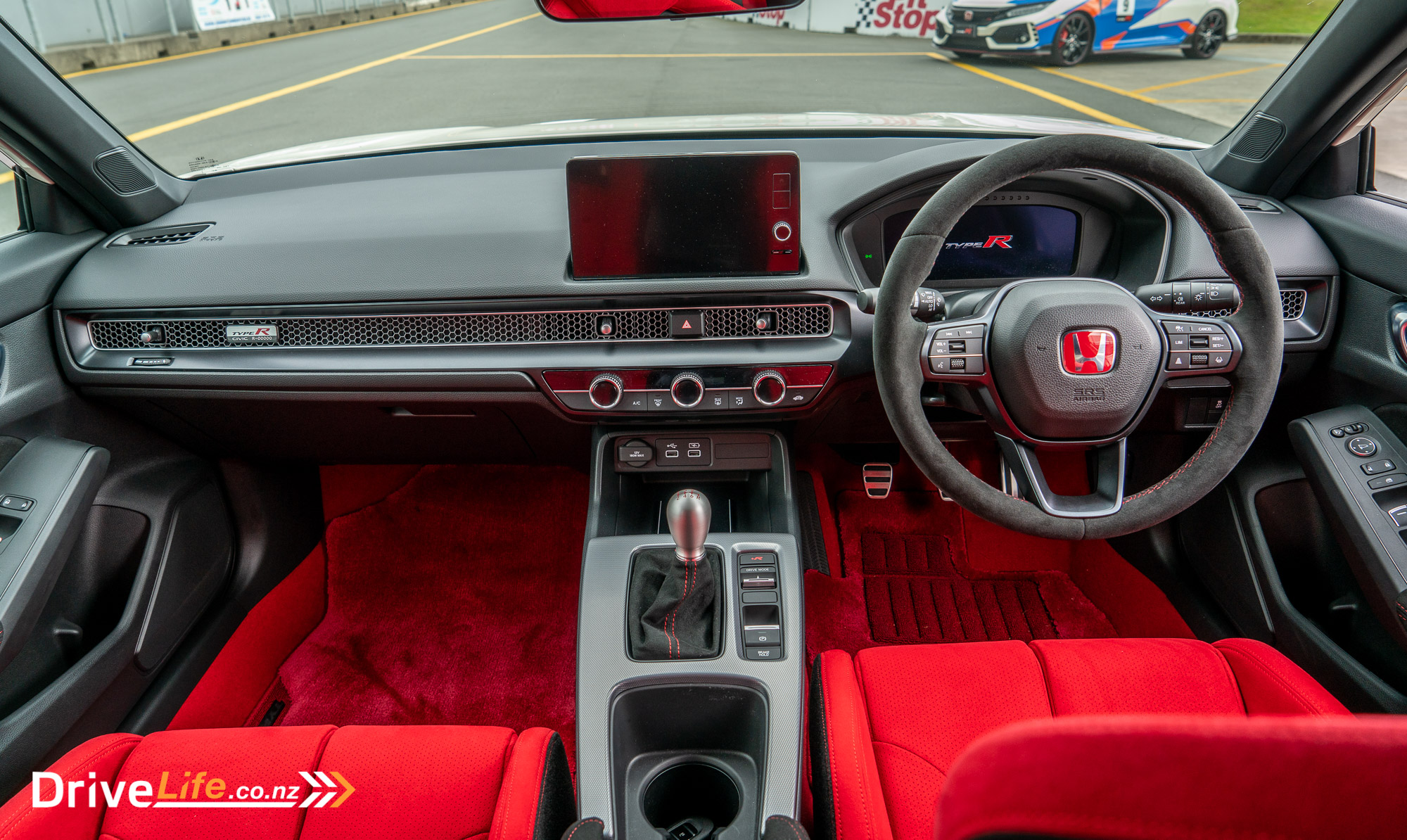
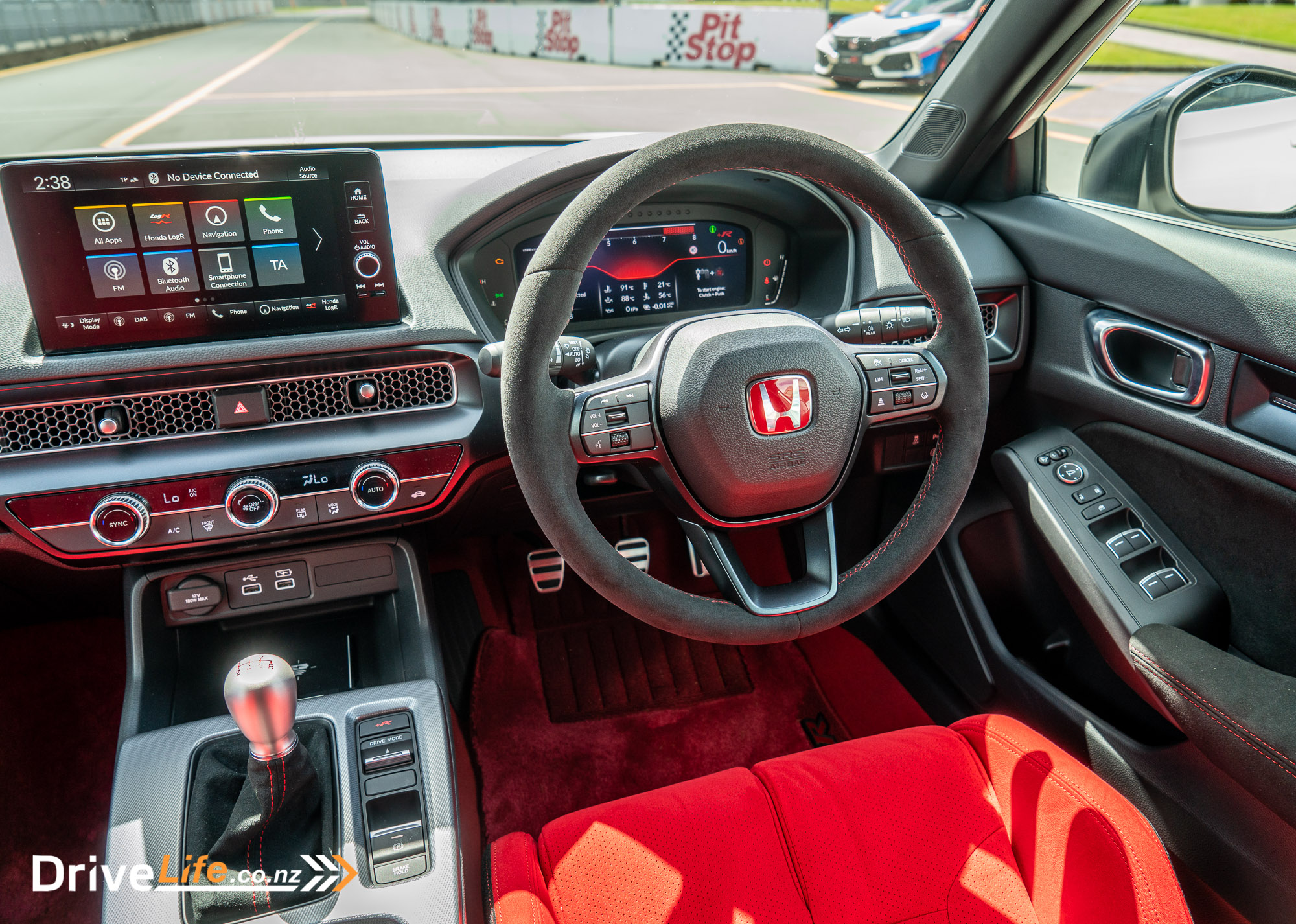
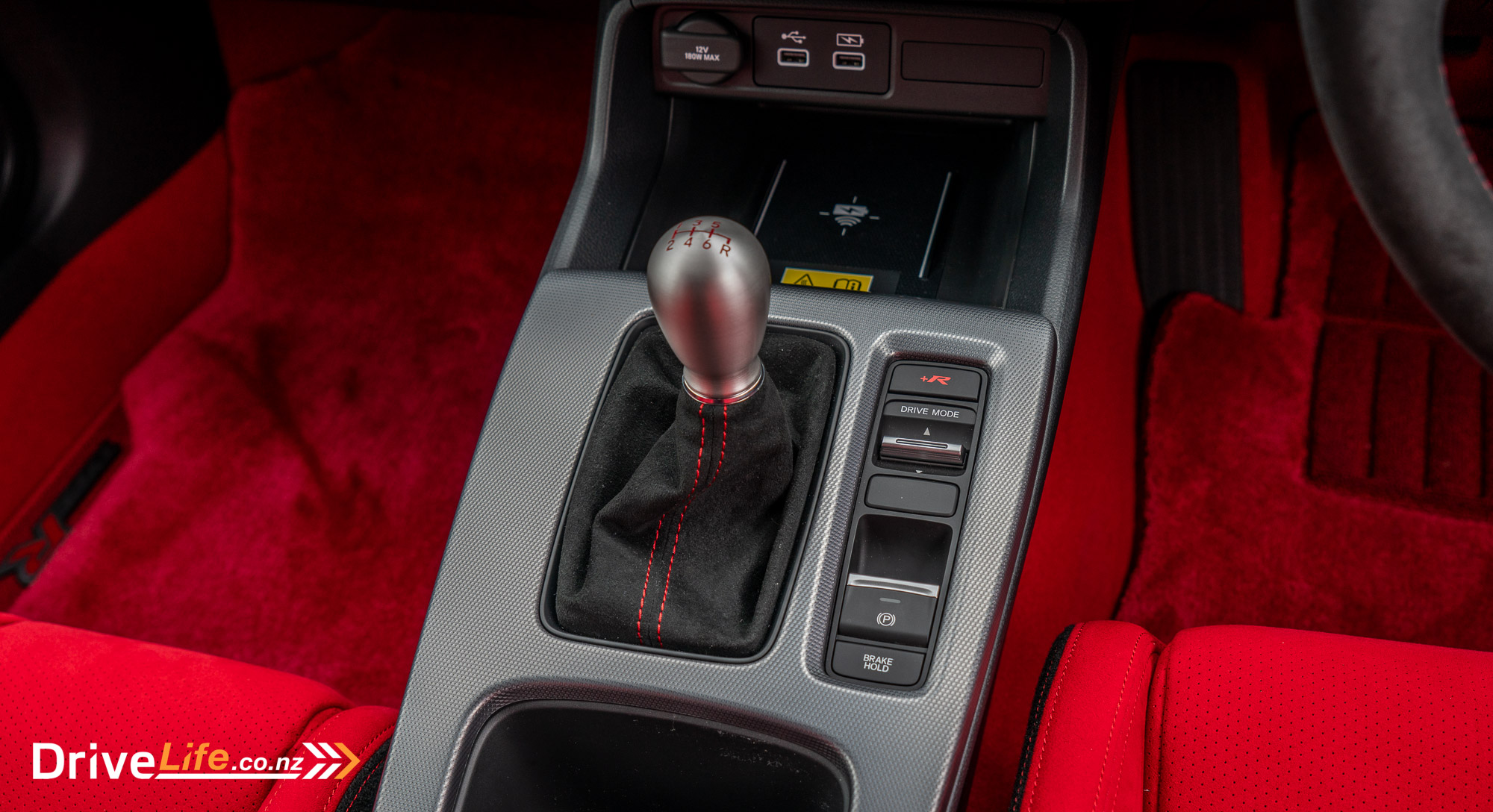
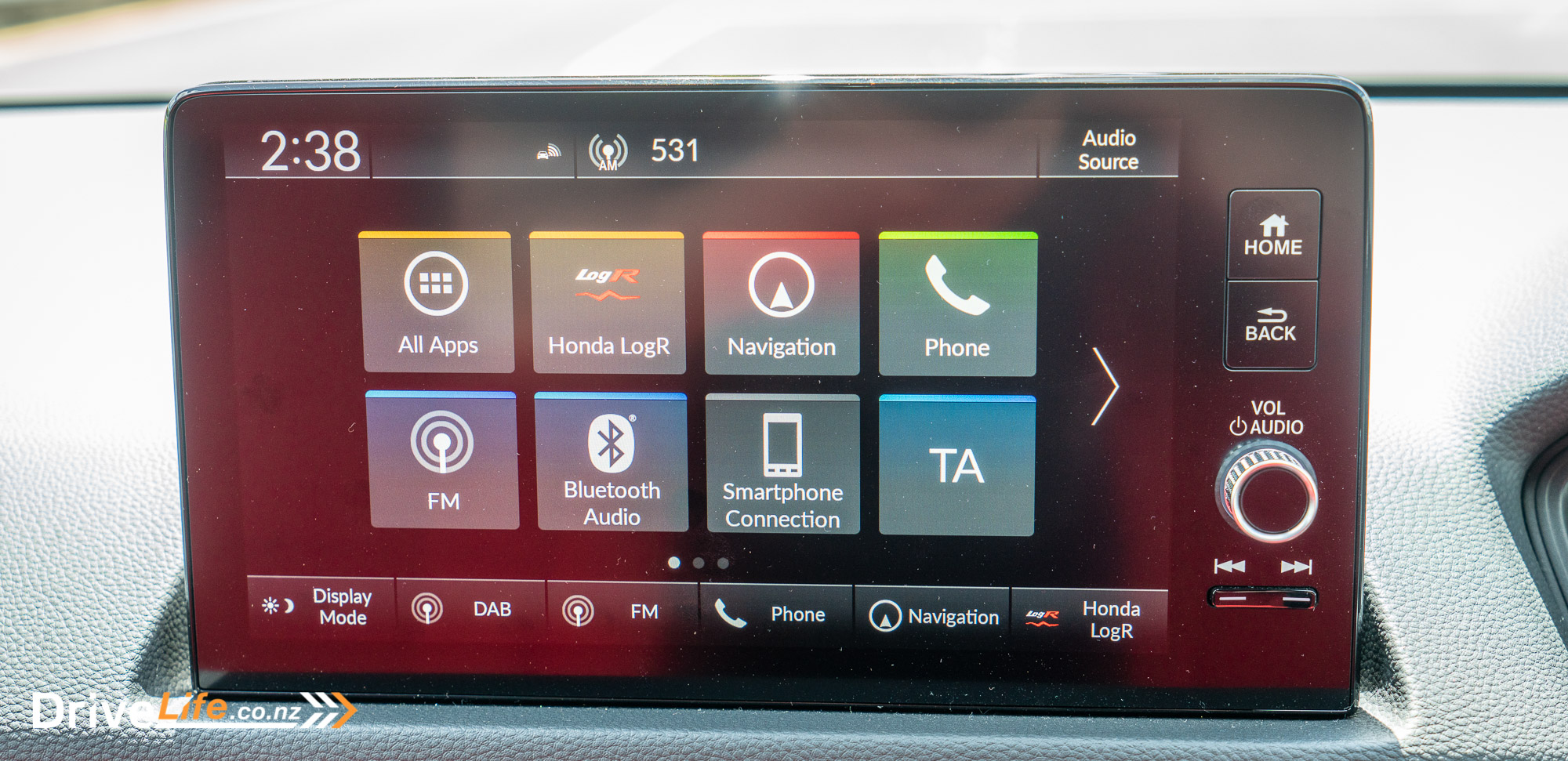
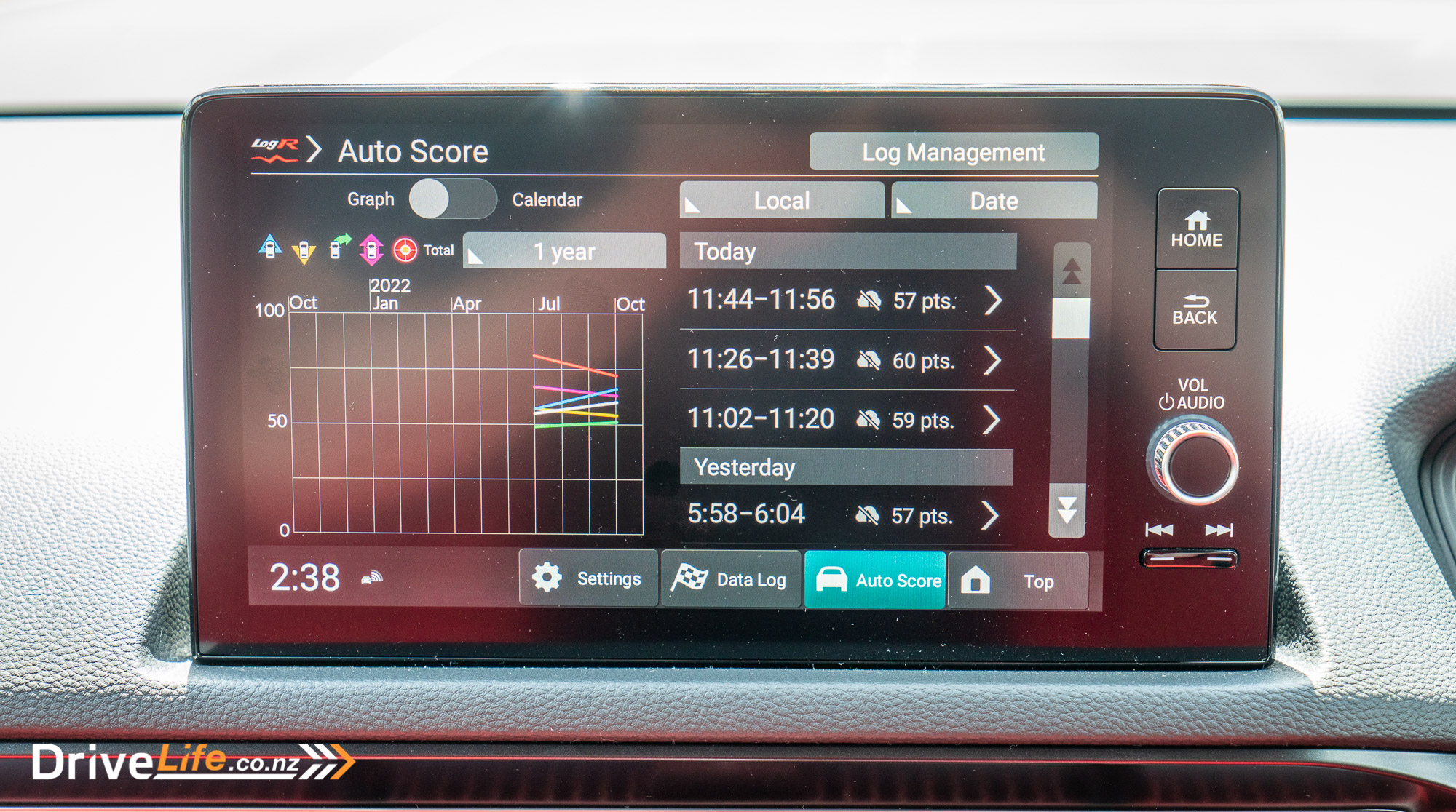











































Nice but too big, too many toys.
A great far at list price, especially compared to the overpriced used FK8s.
For me the best CTR remains the original EK9.
A true, no frills hot hatch.